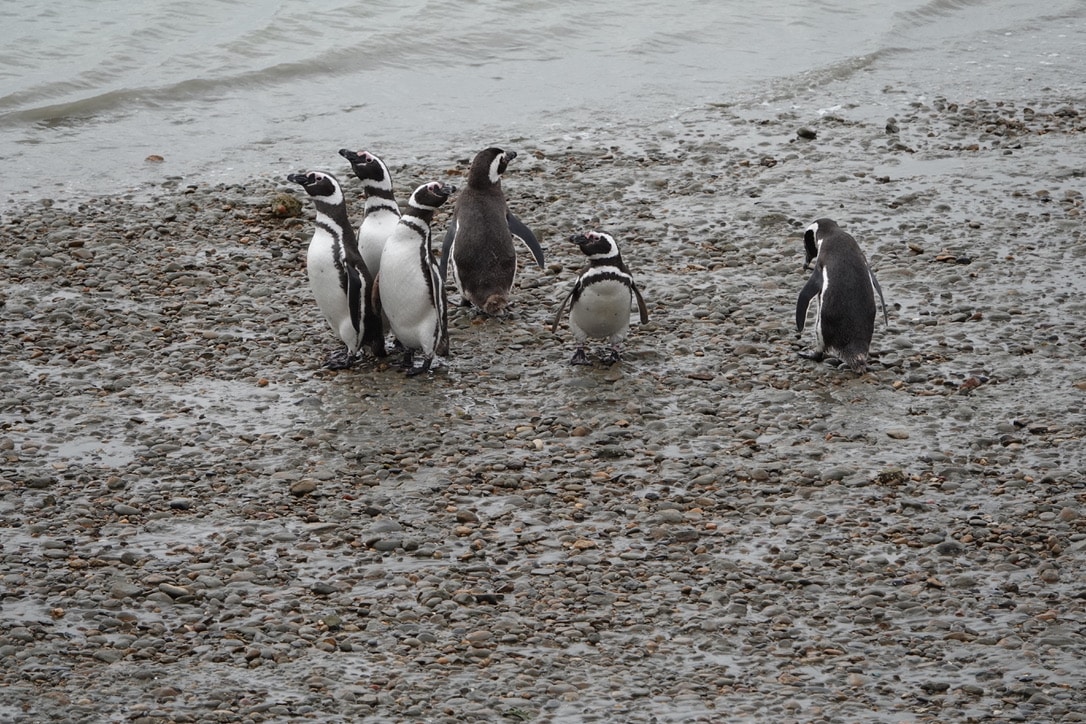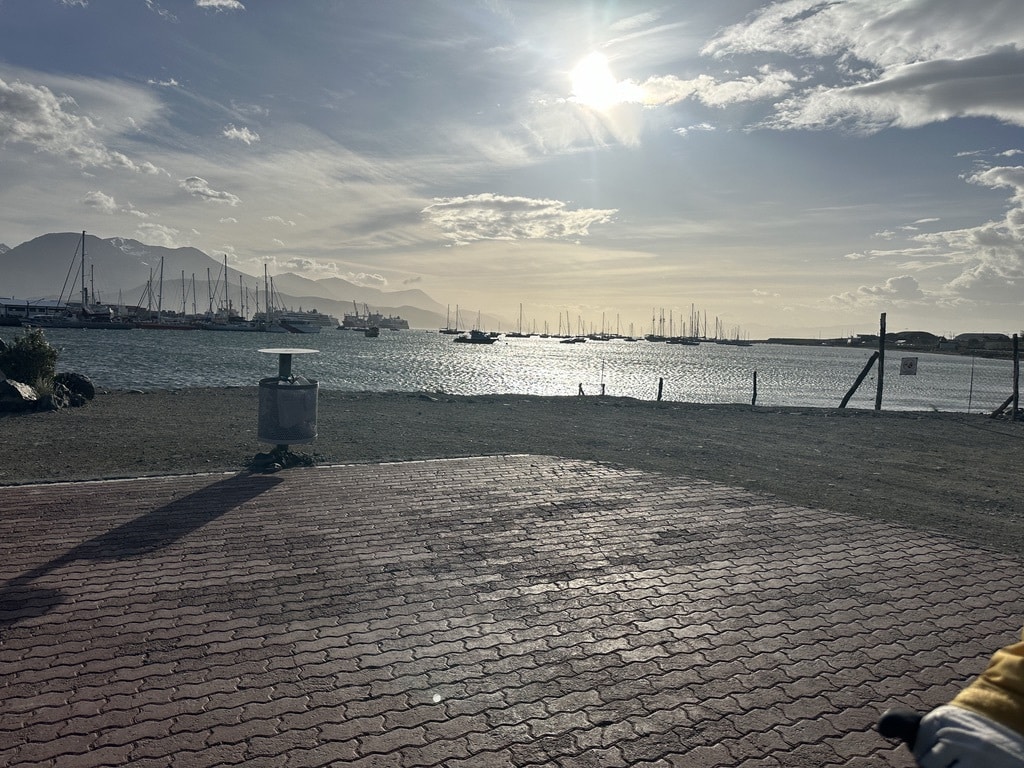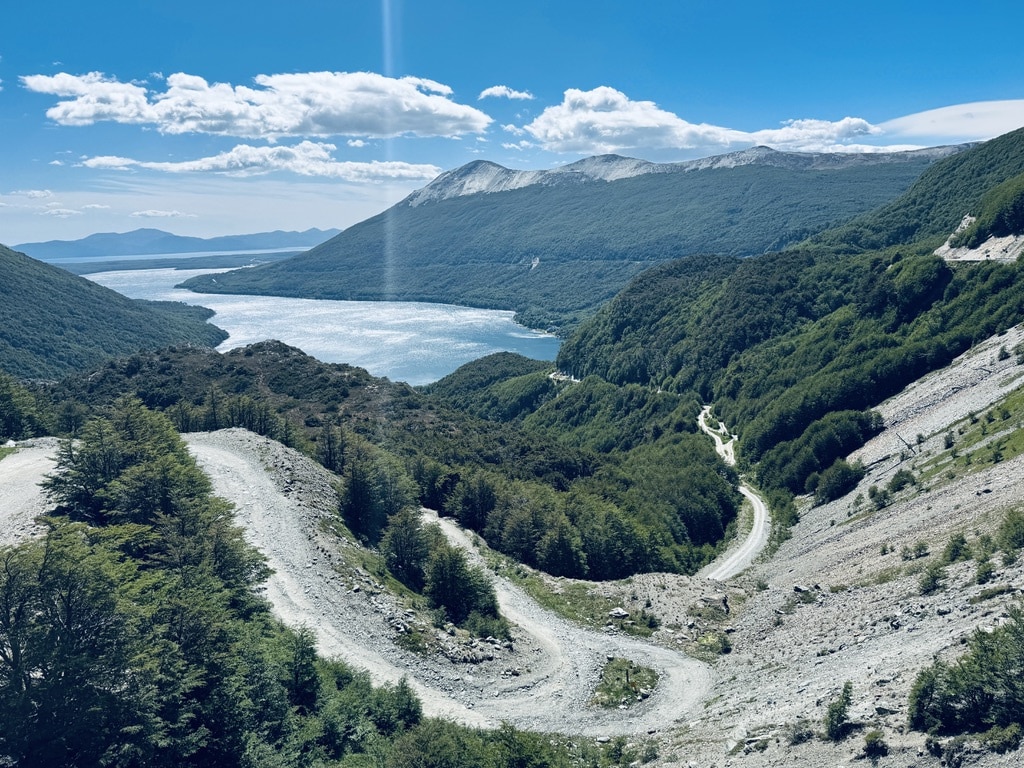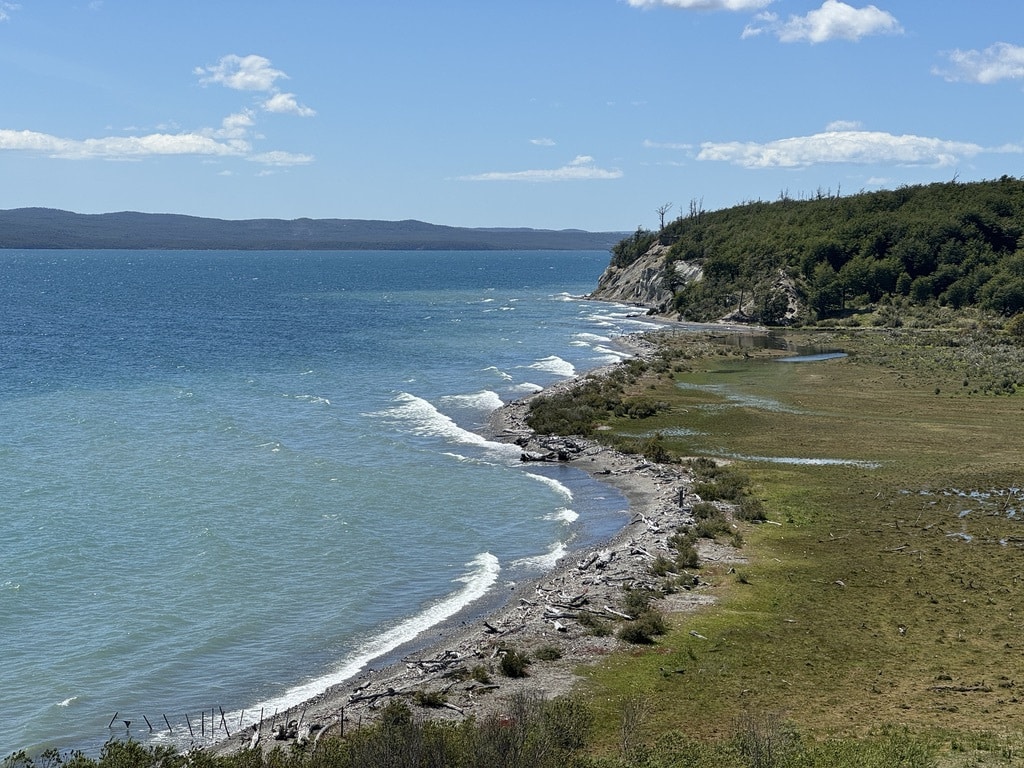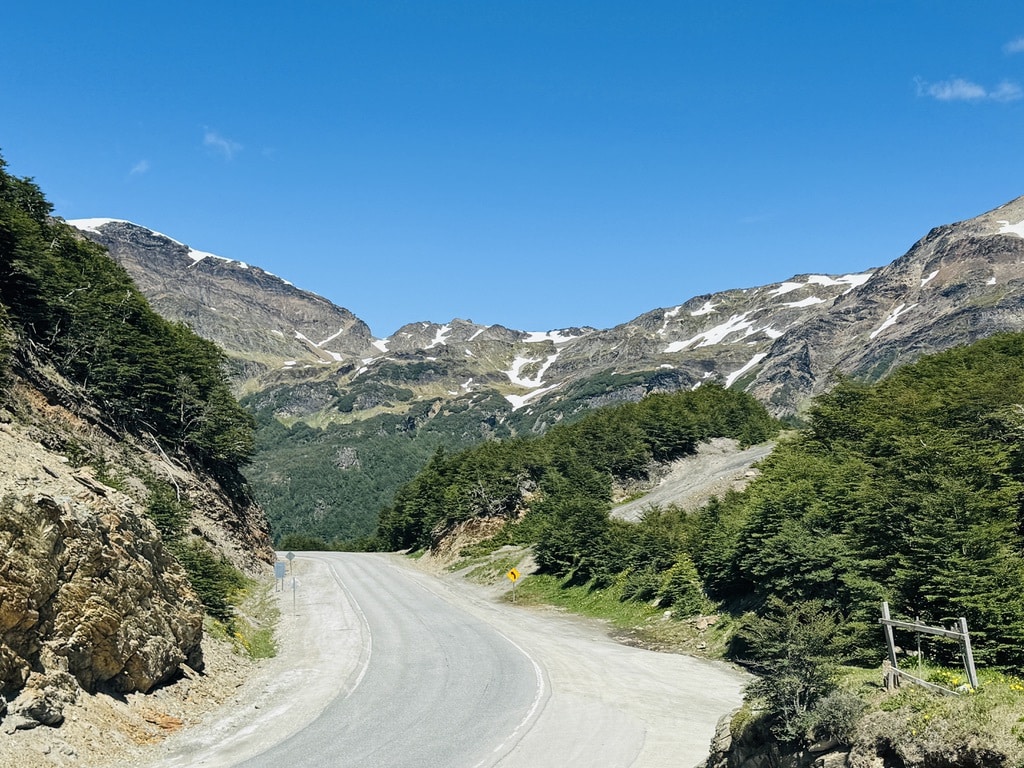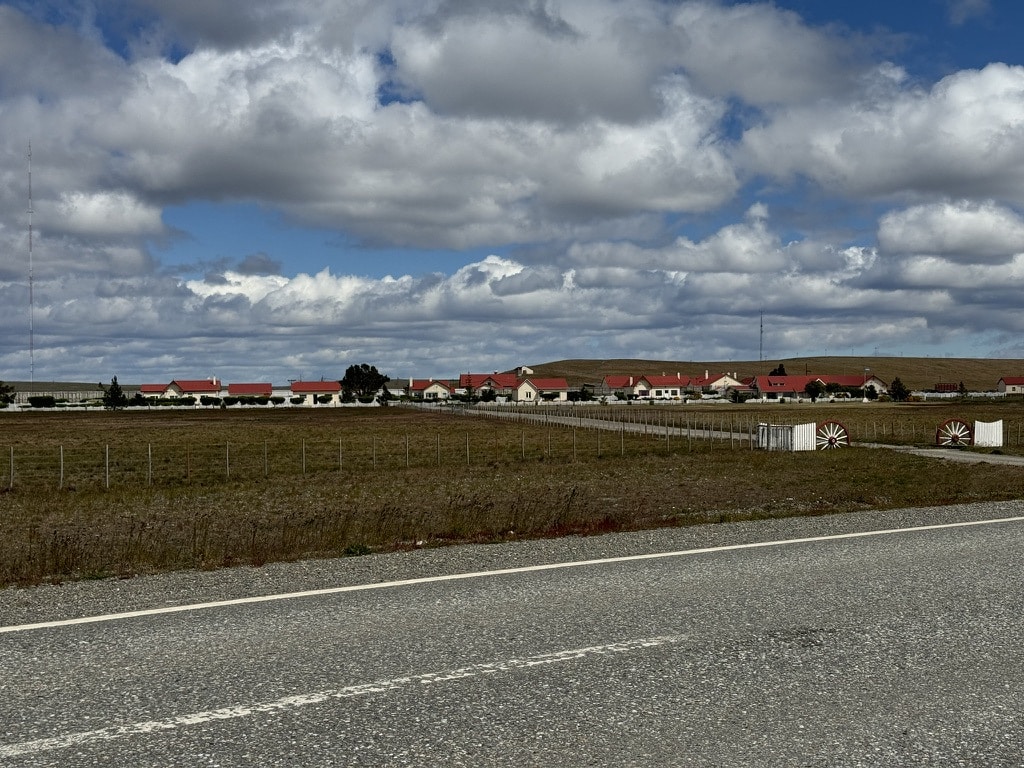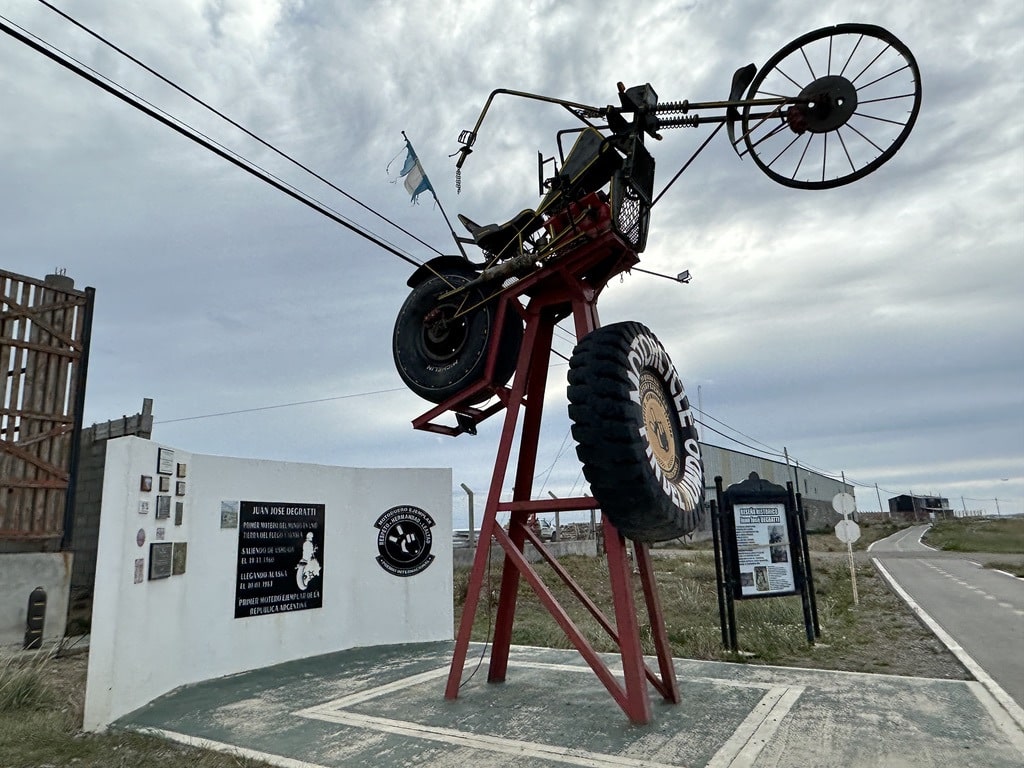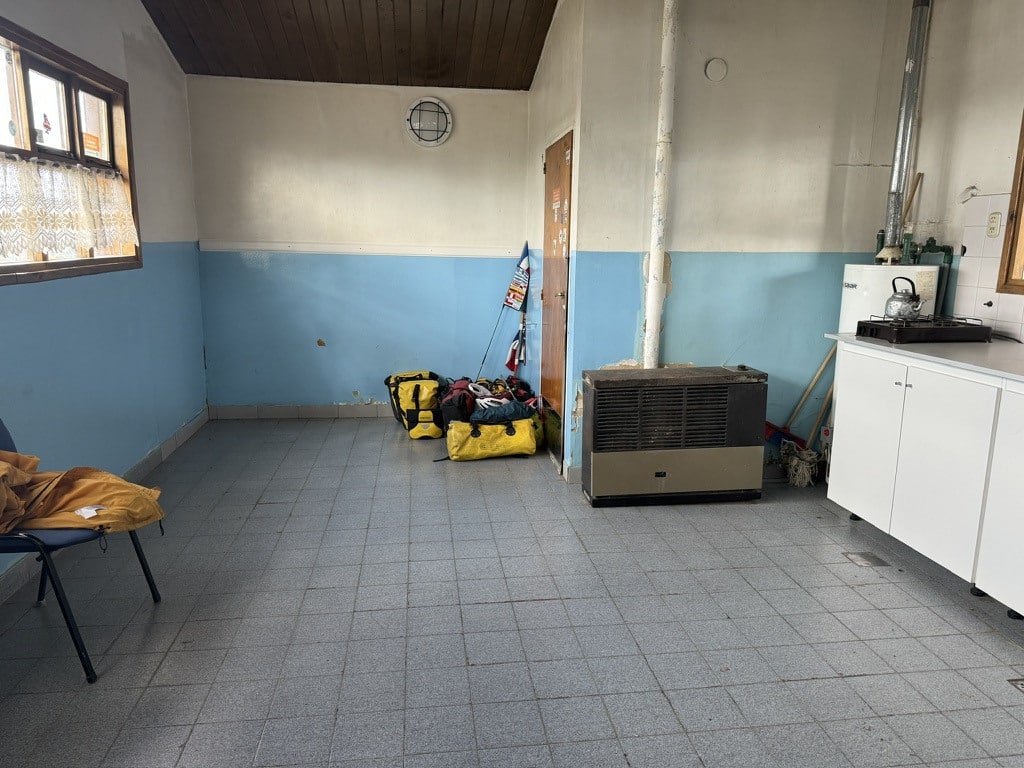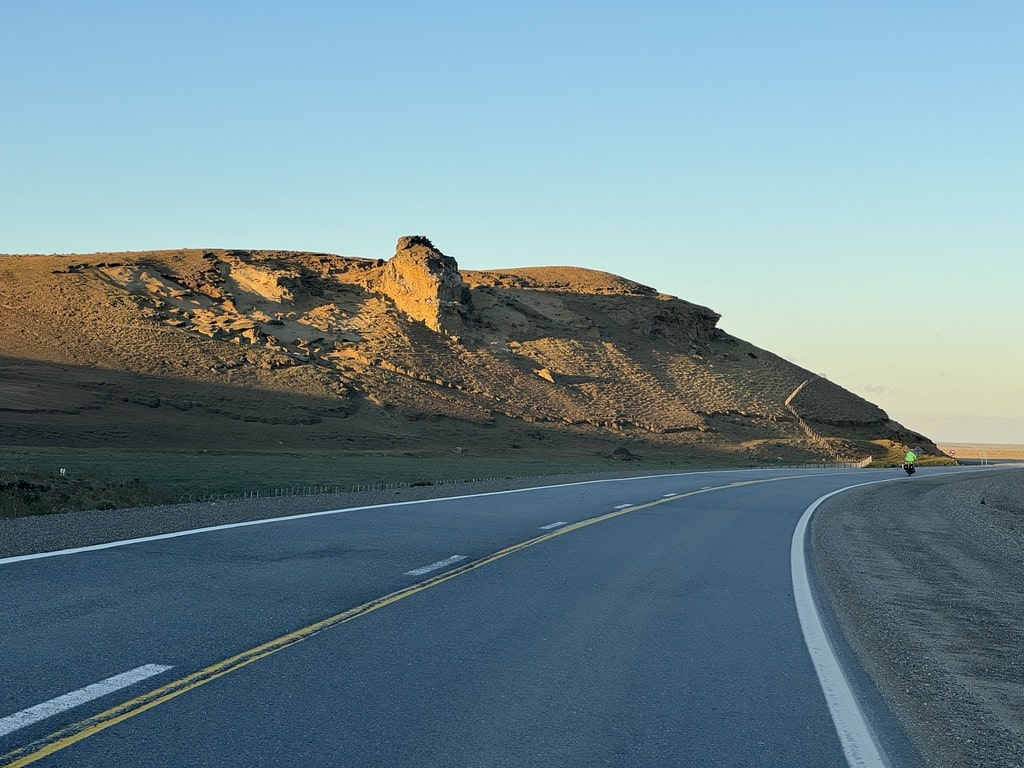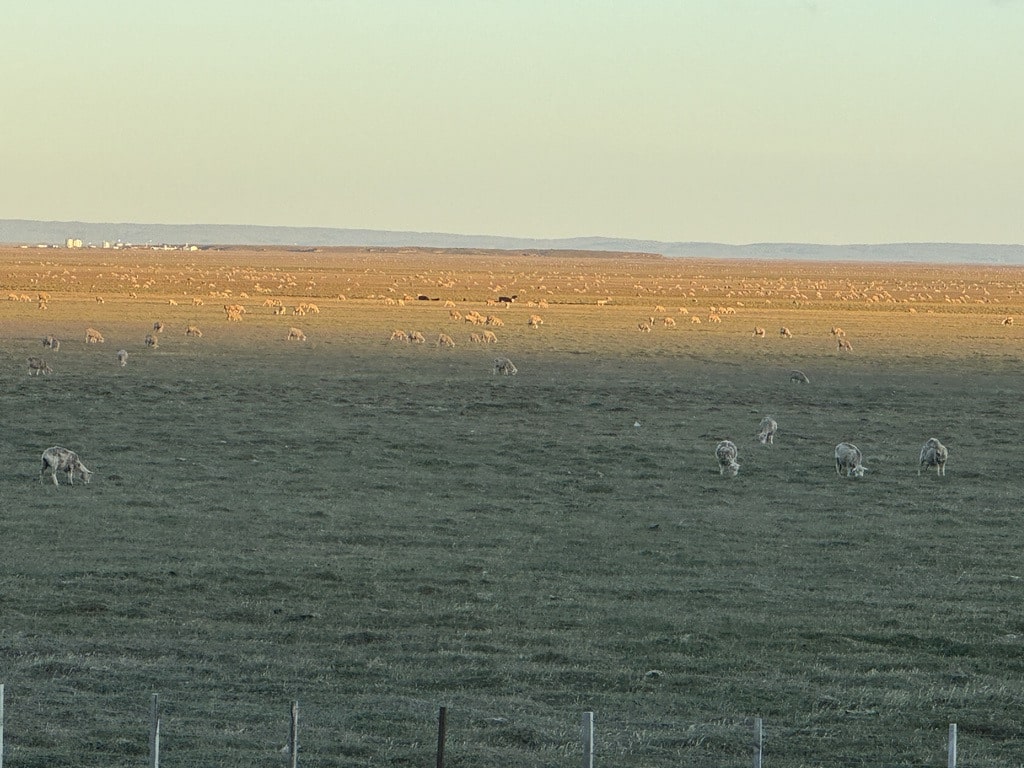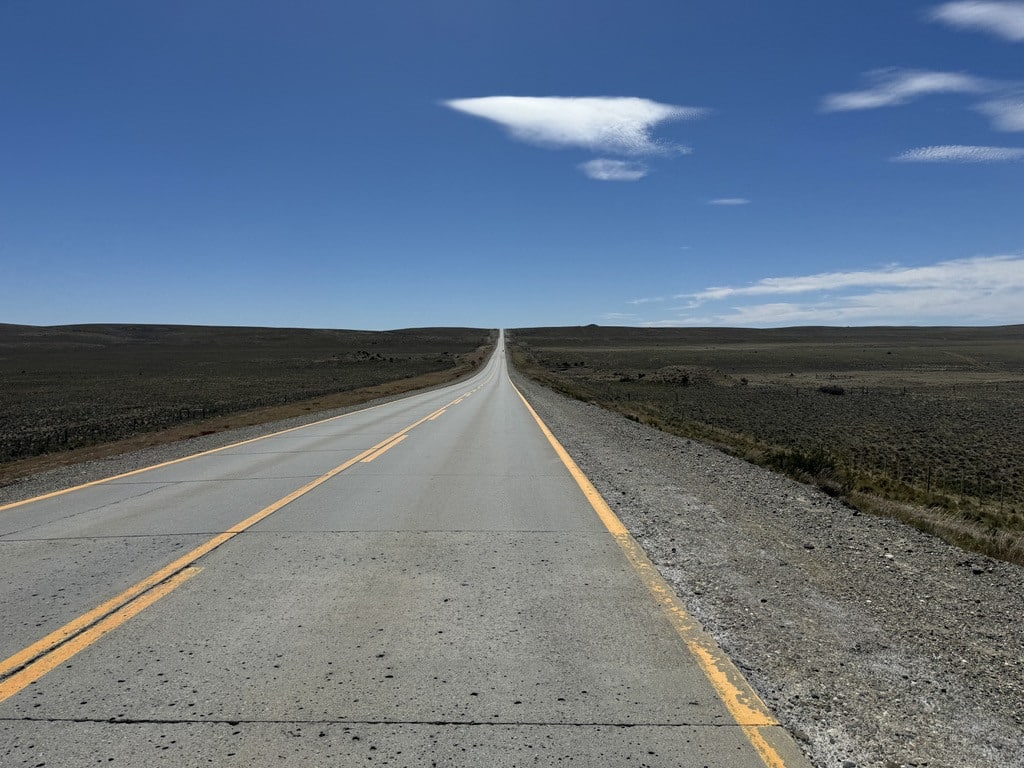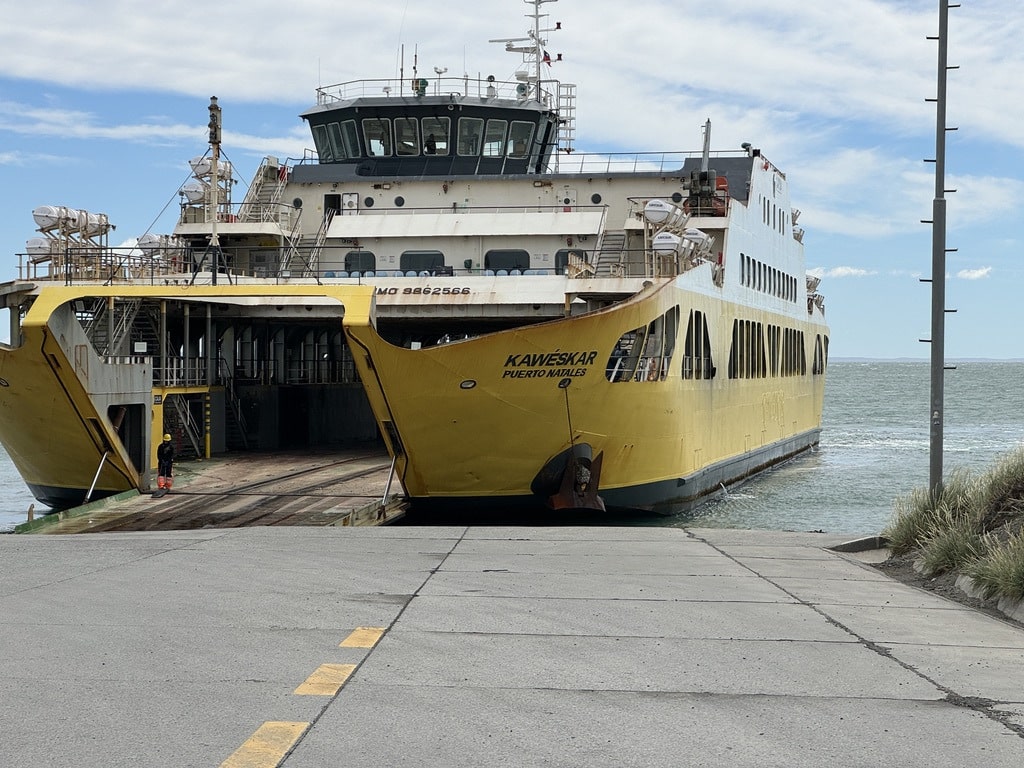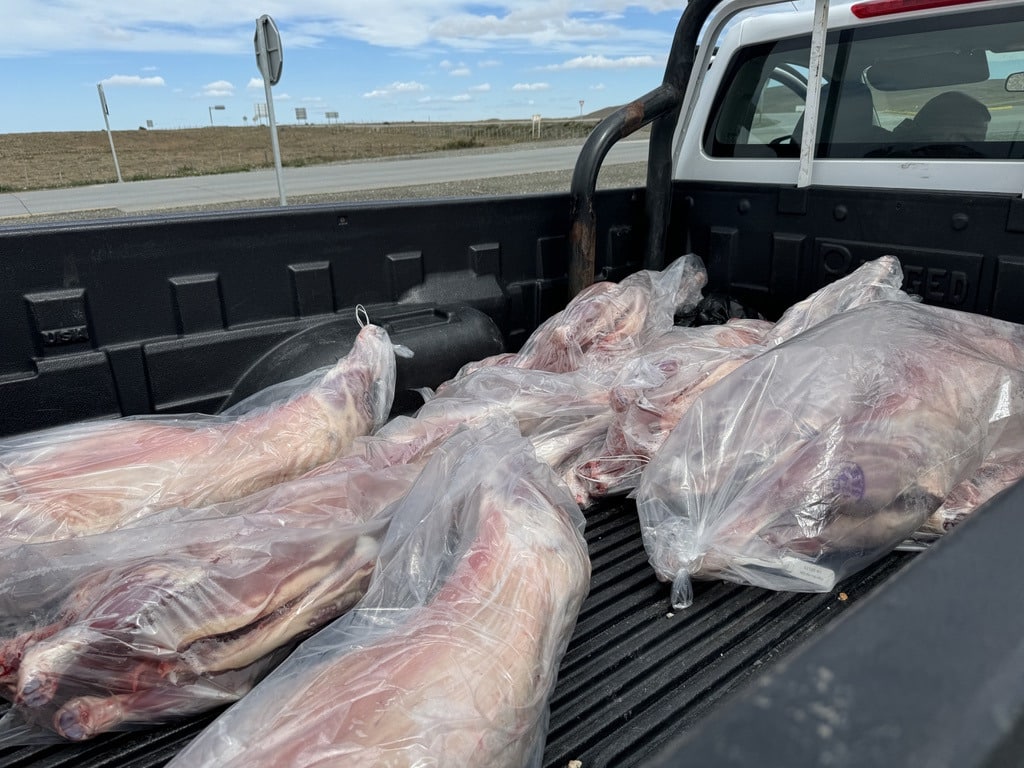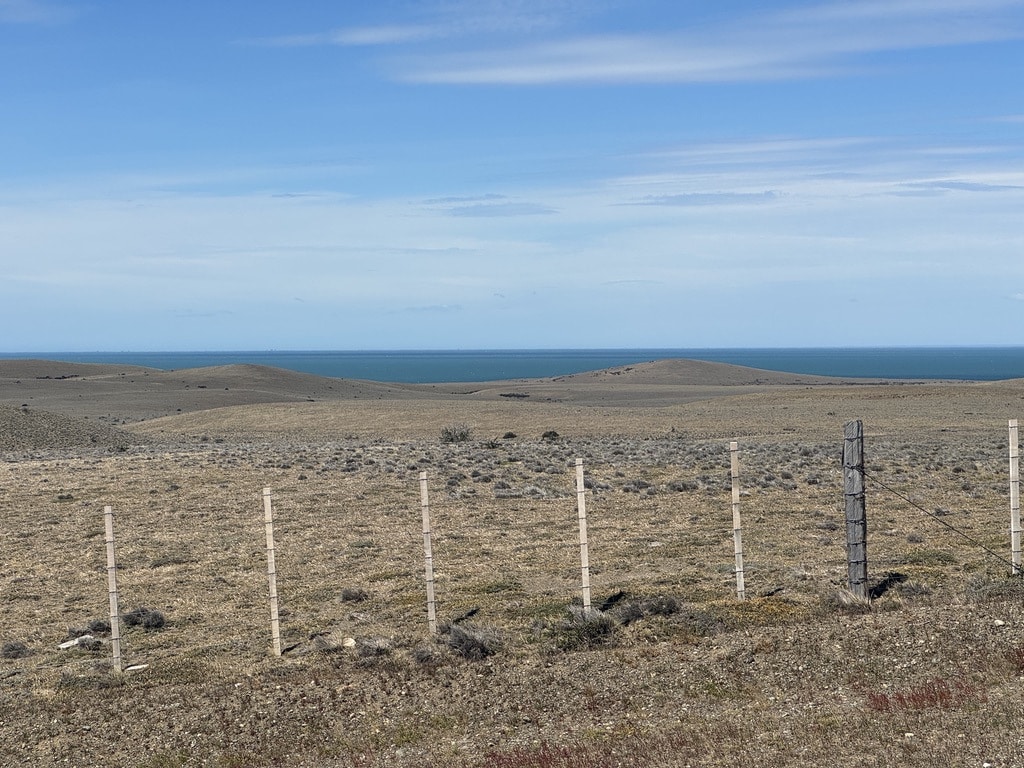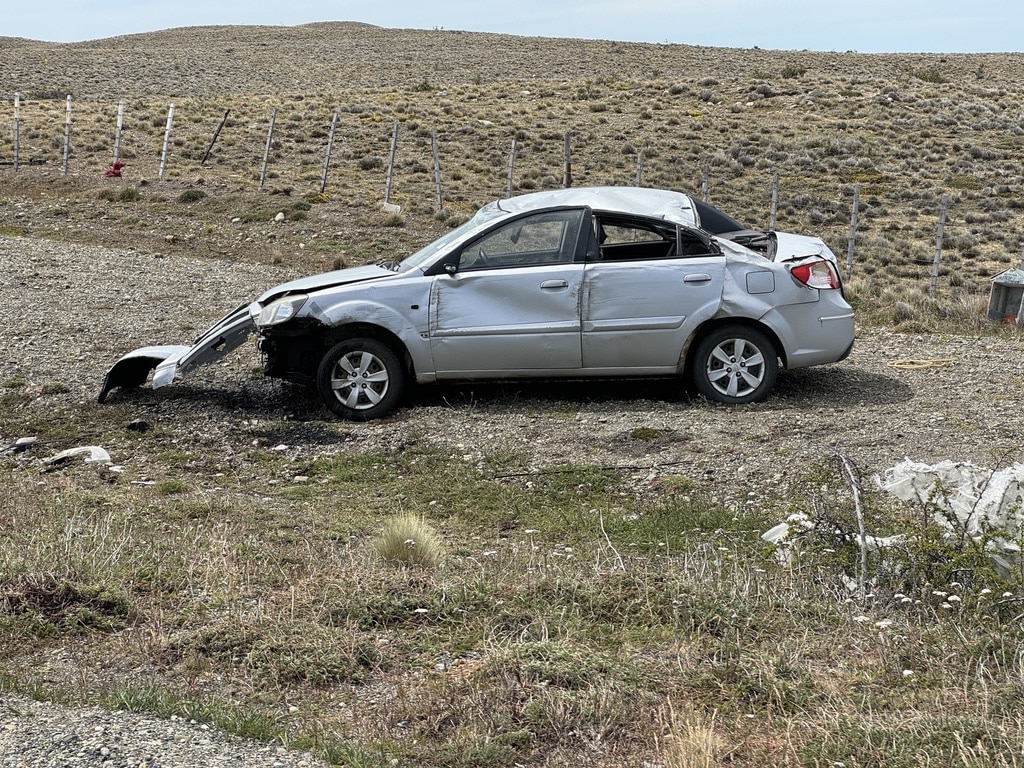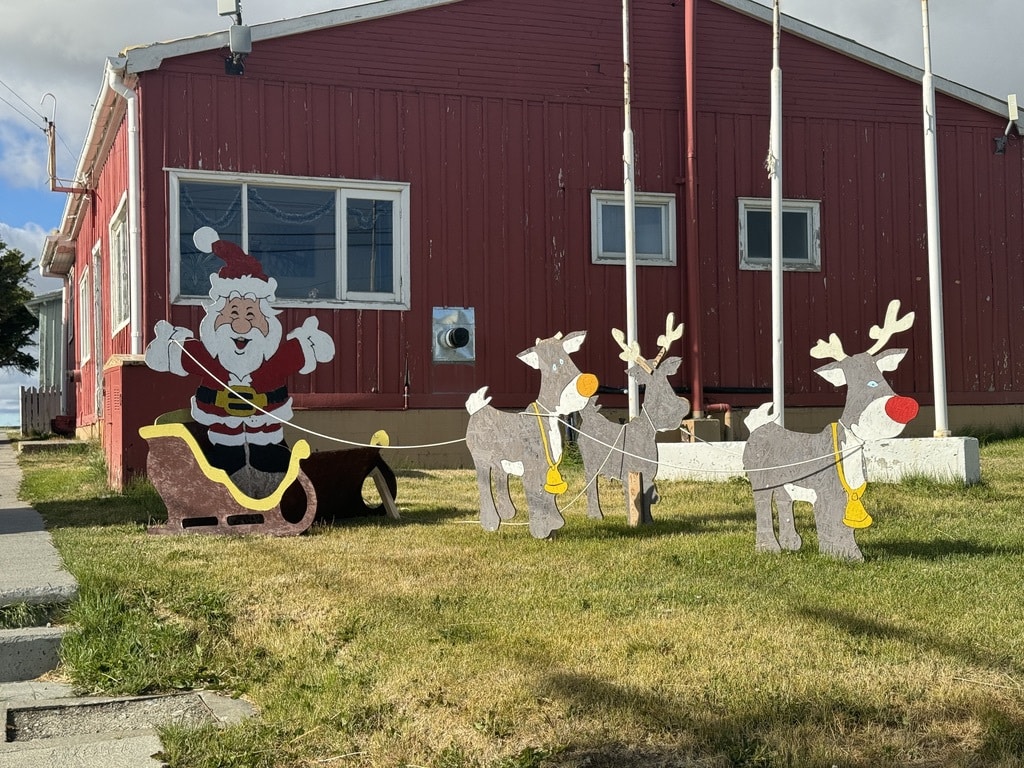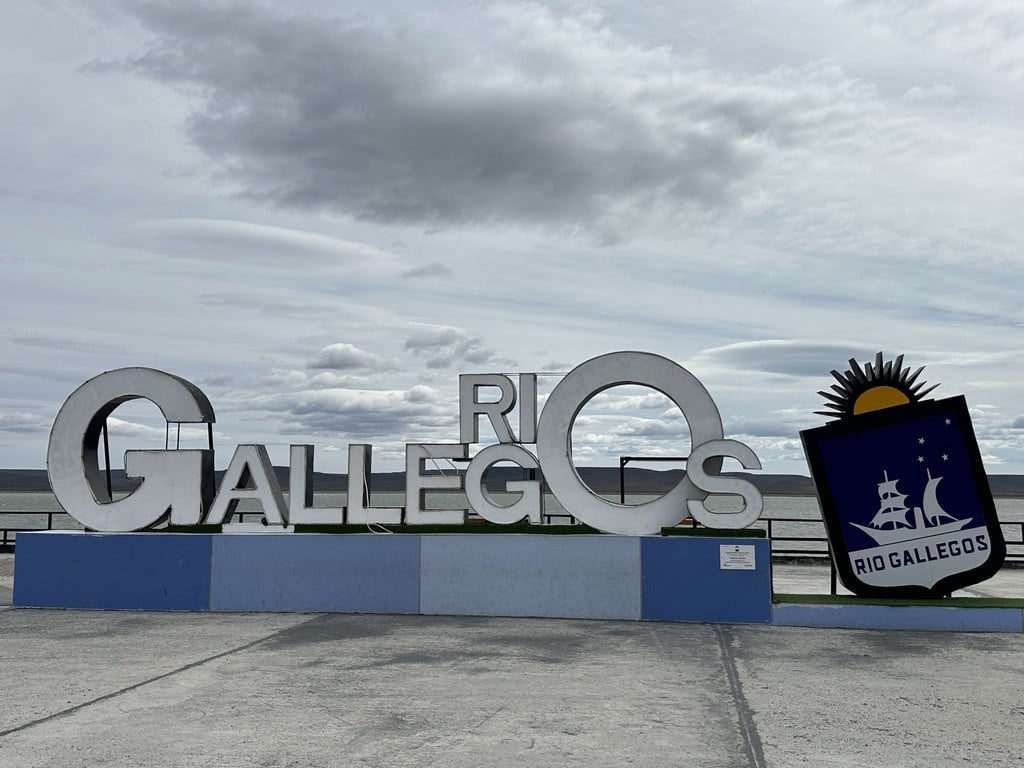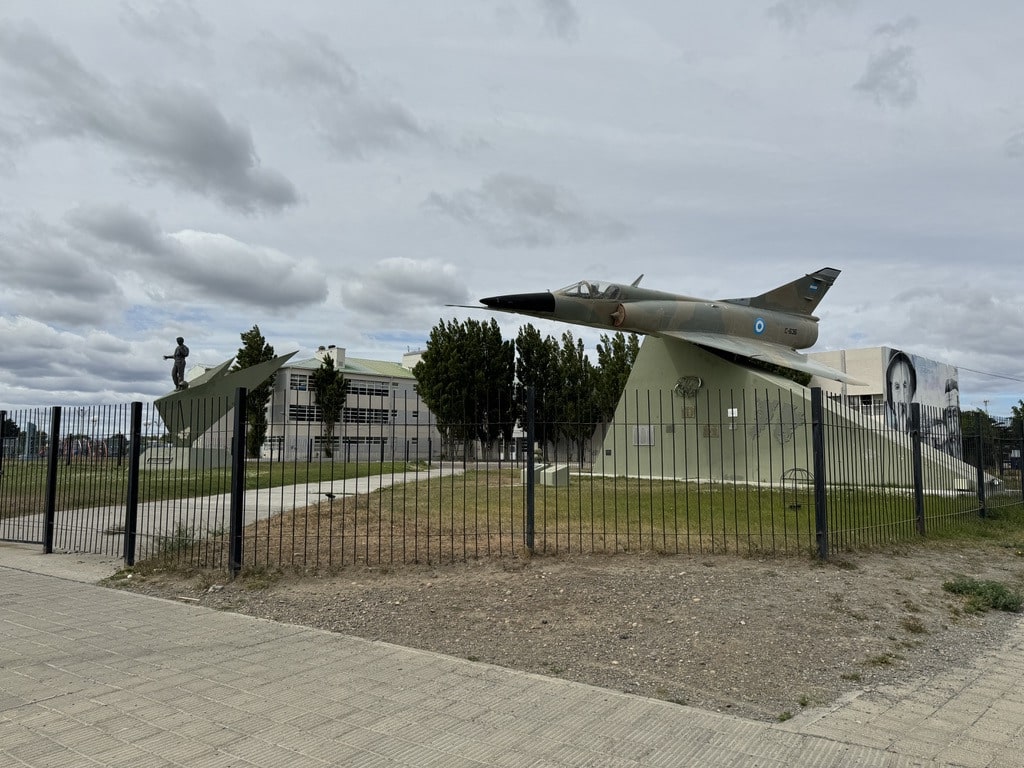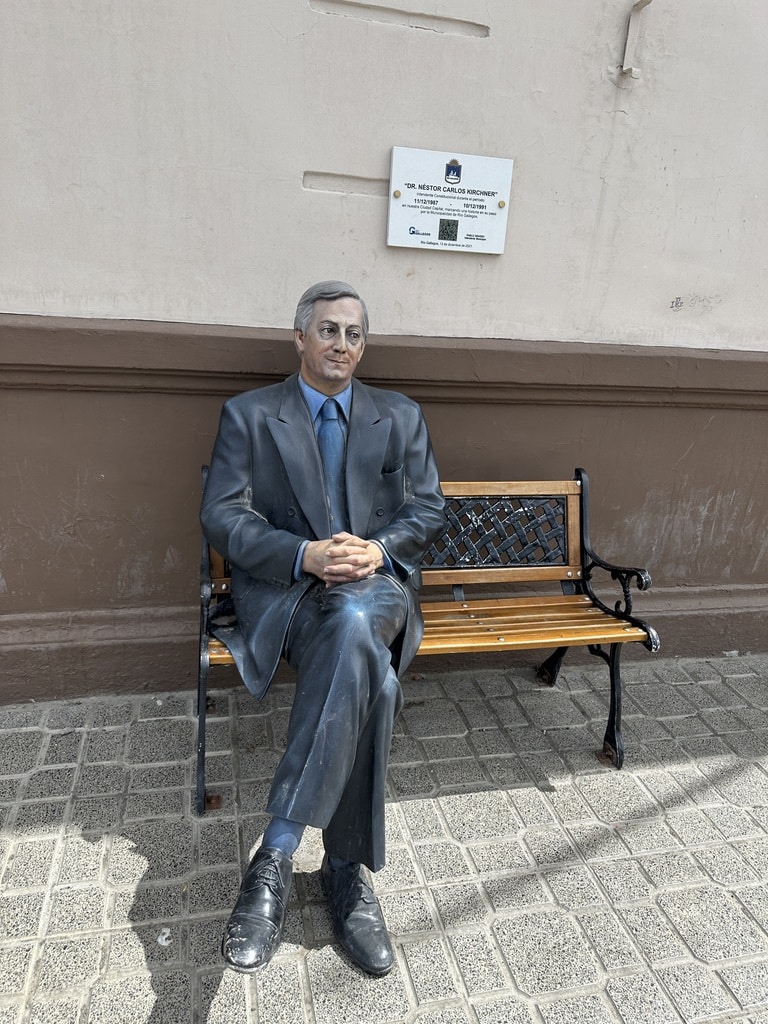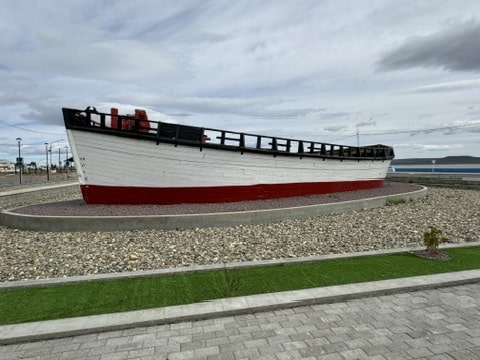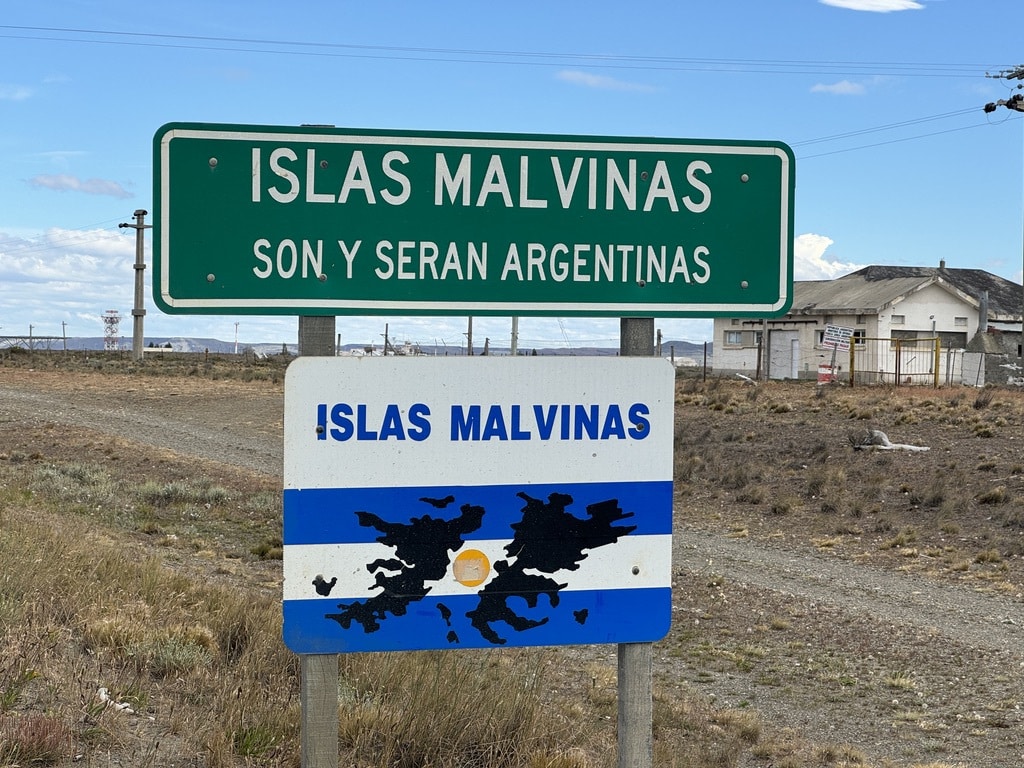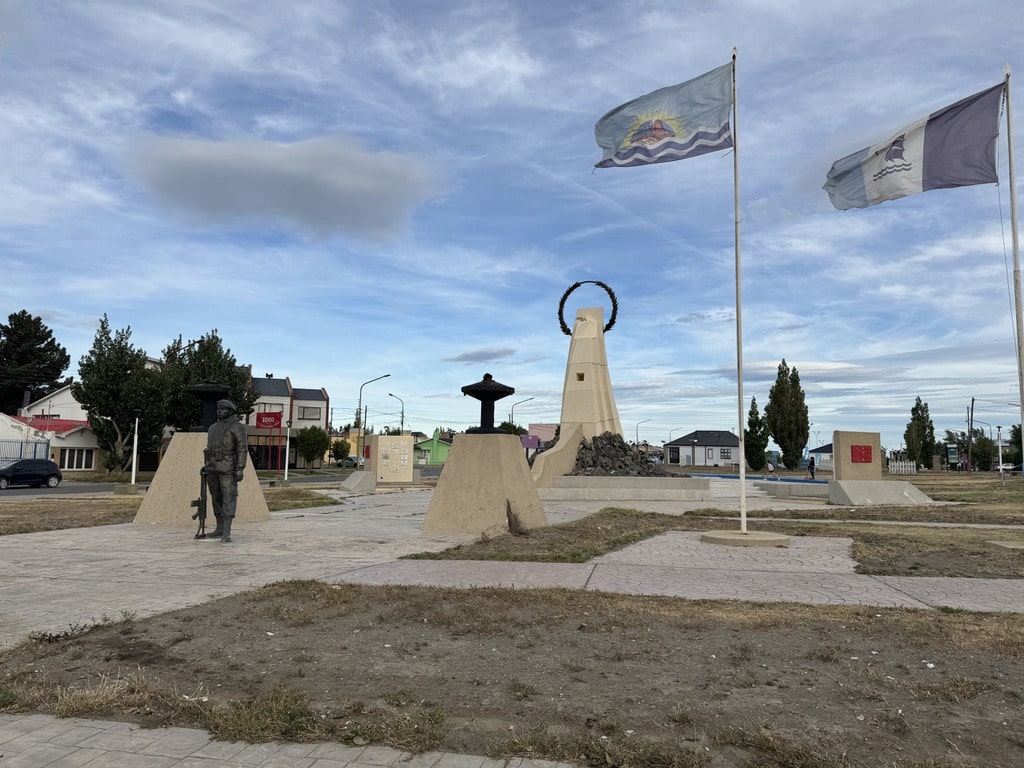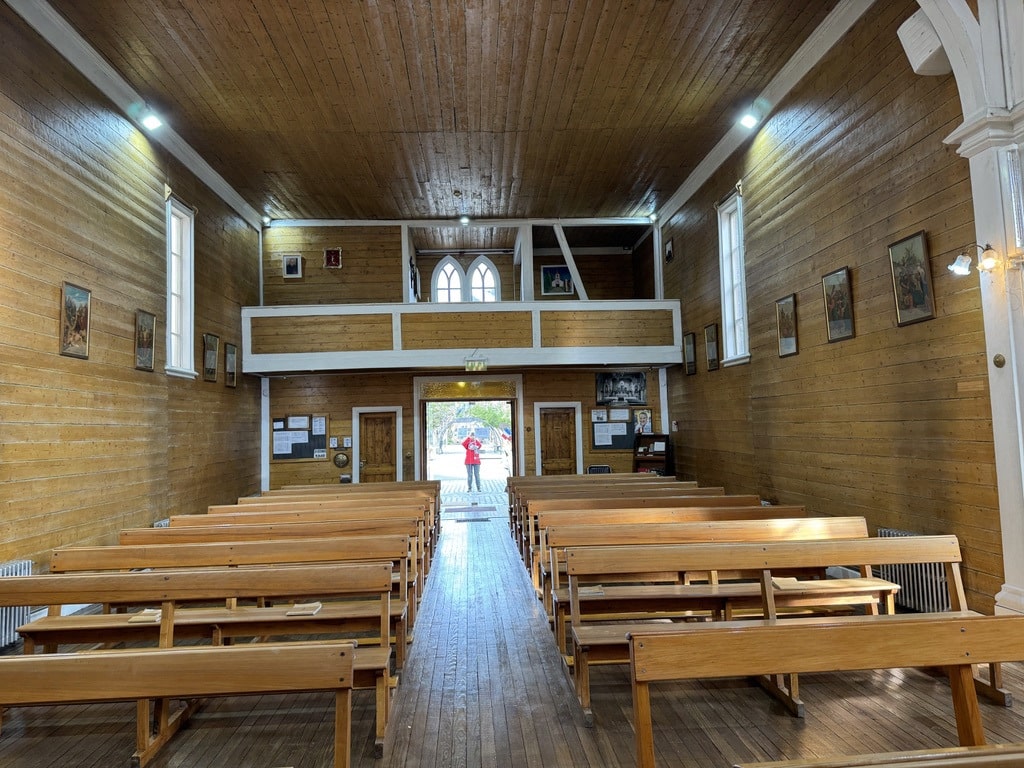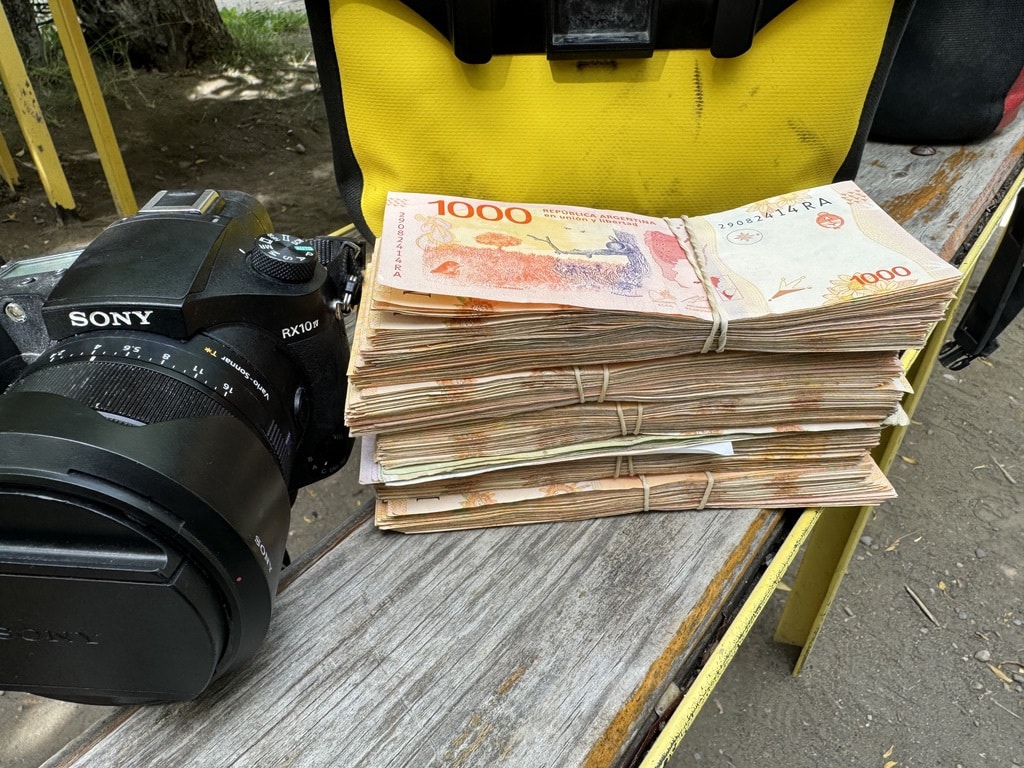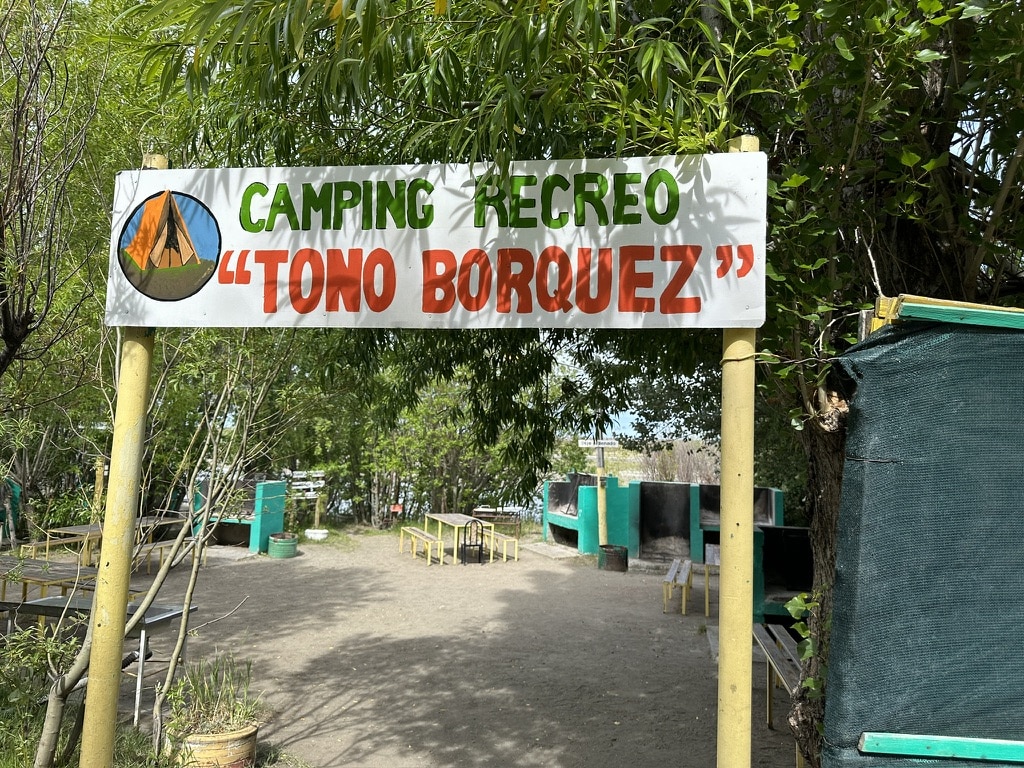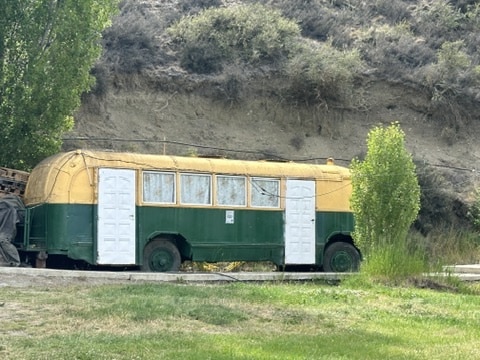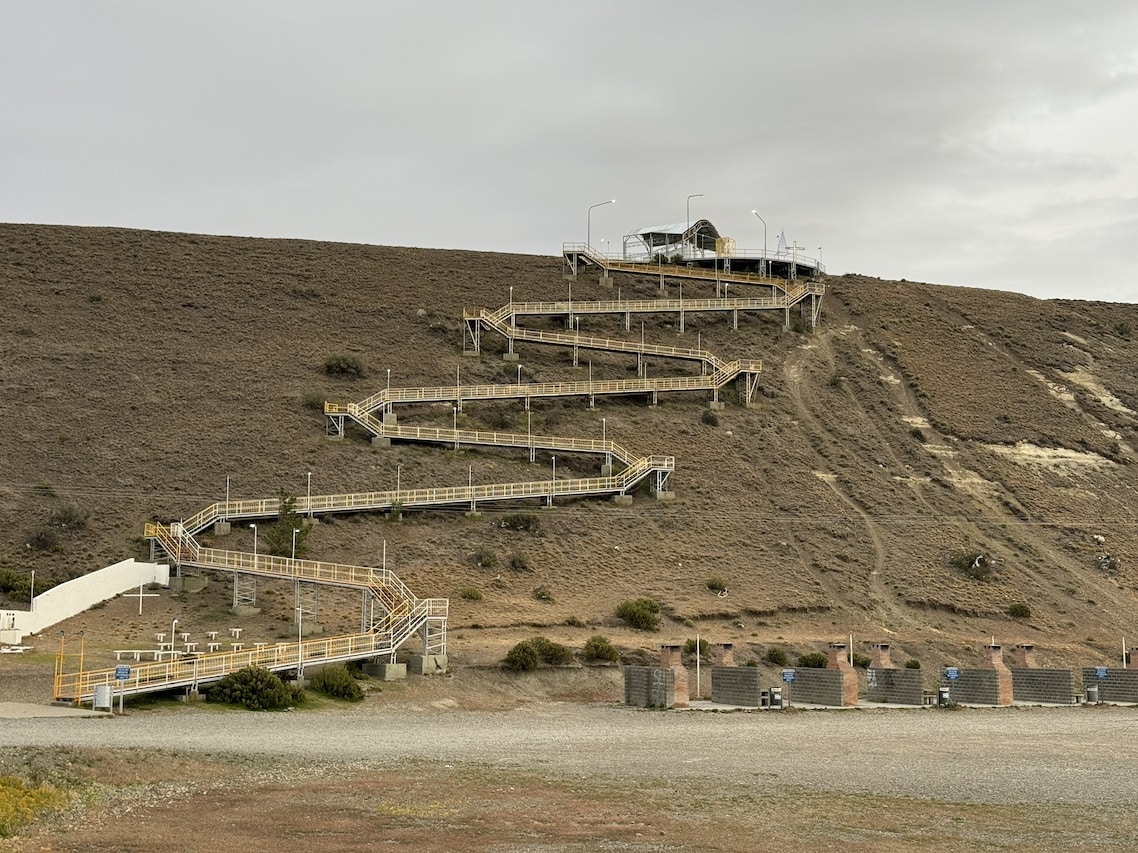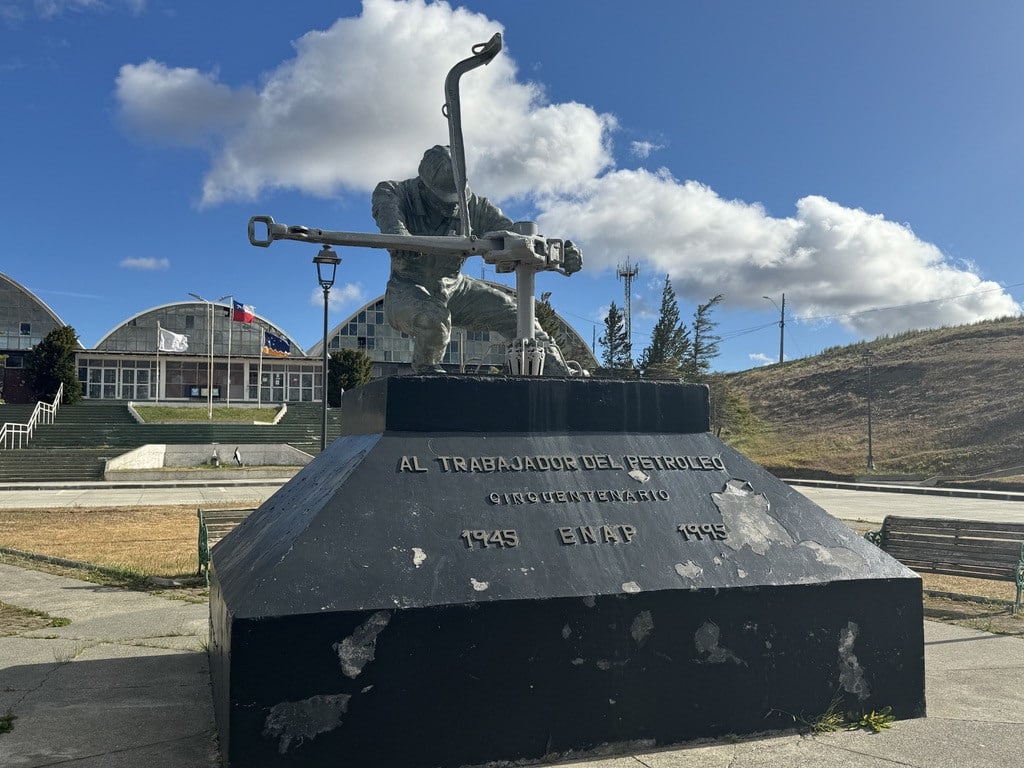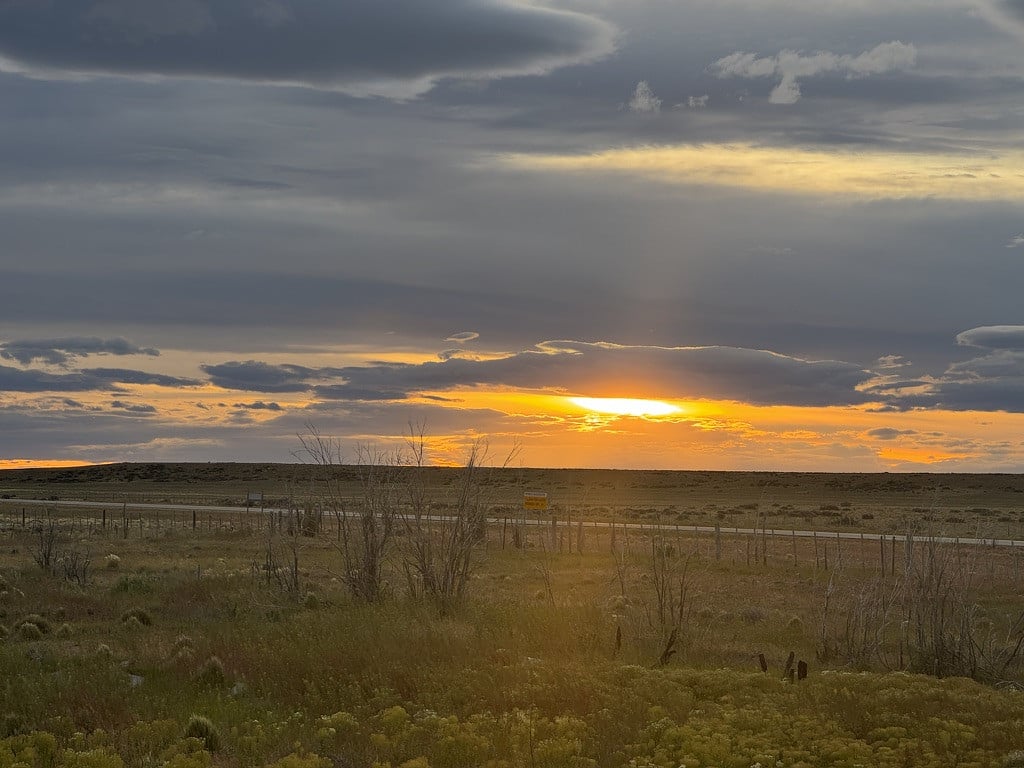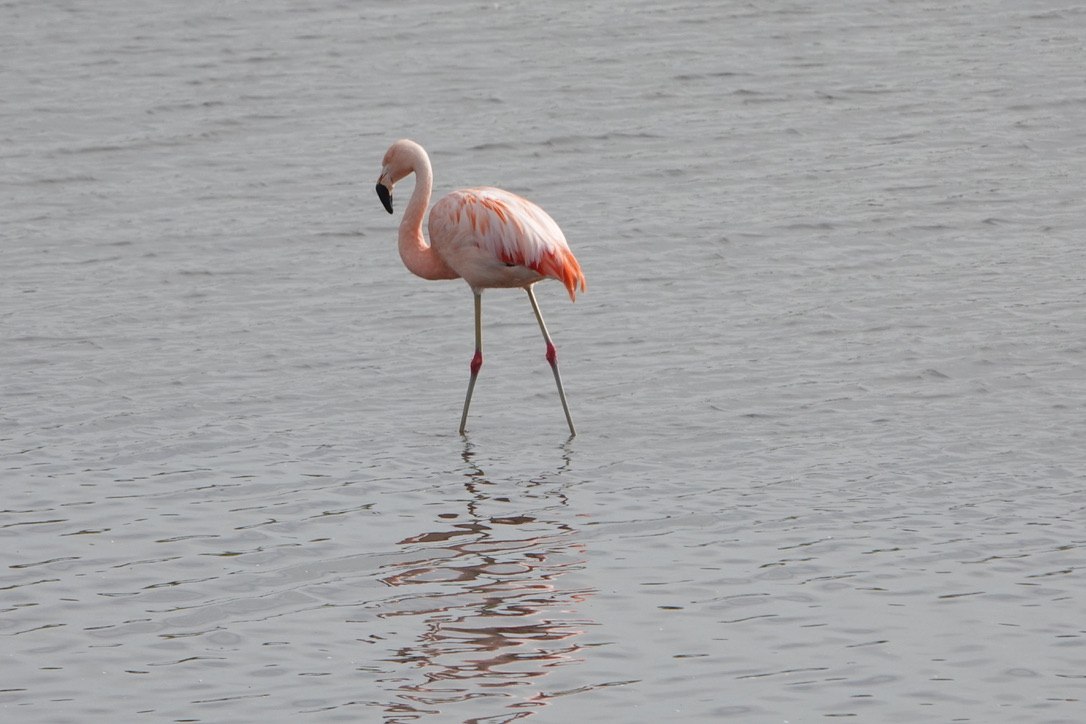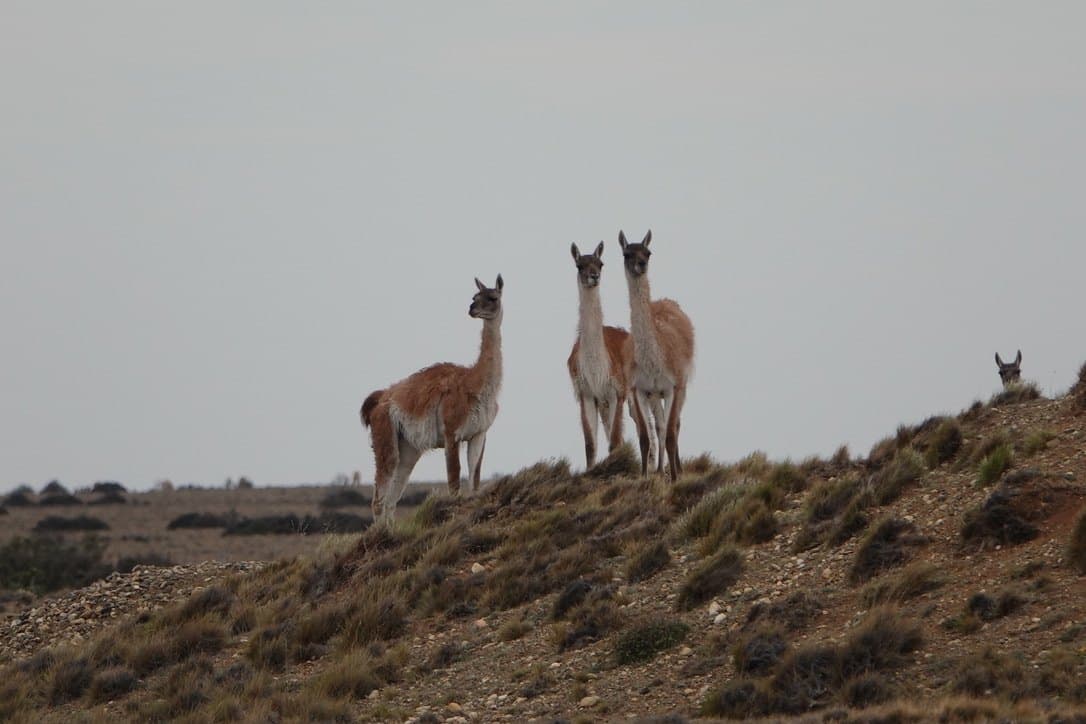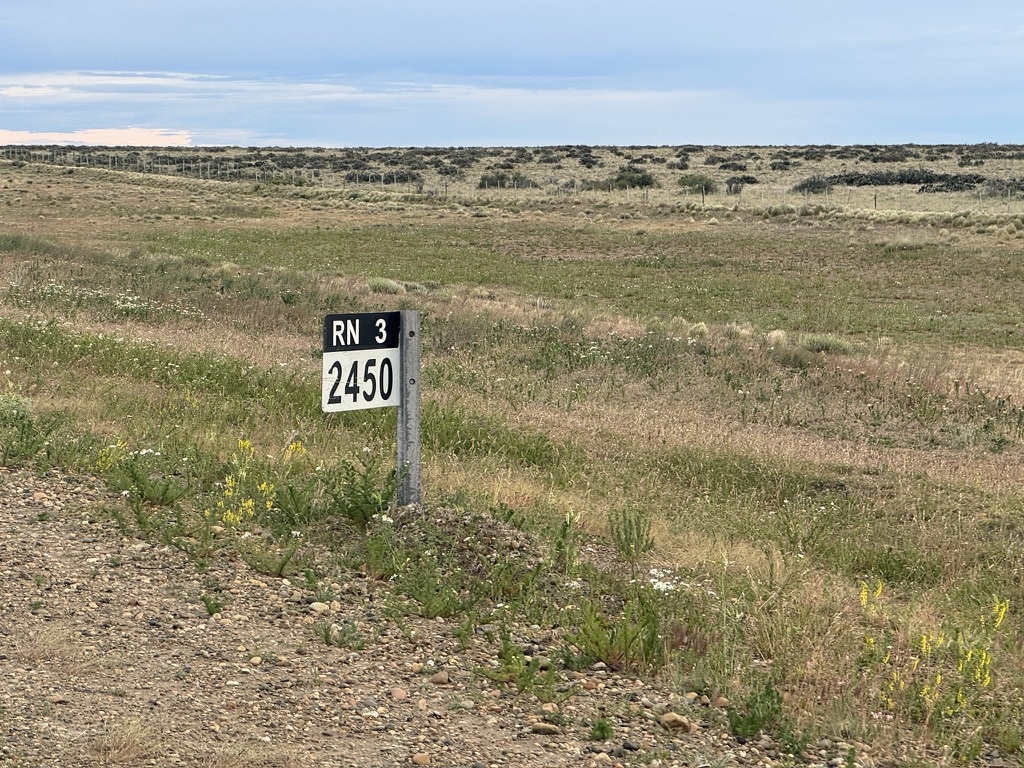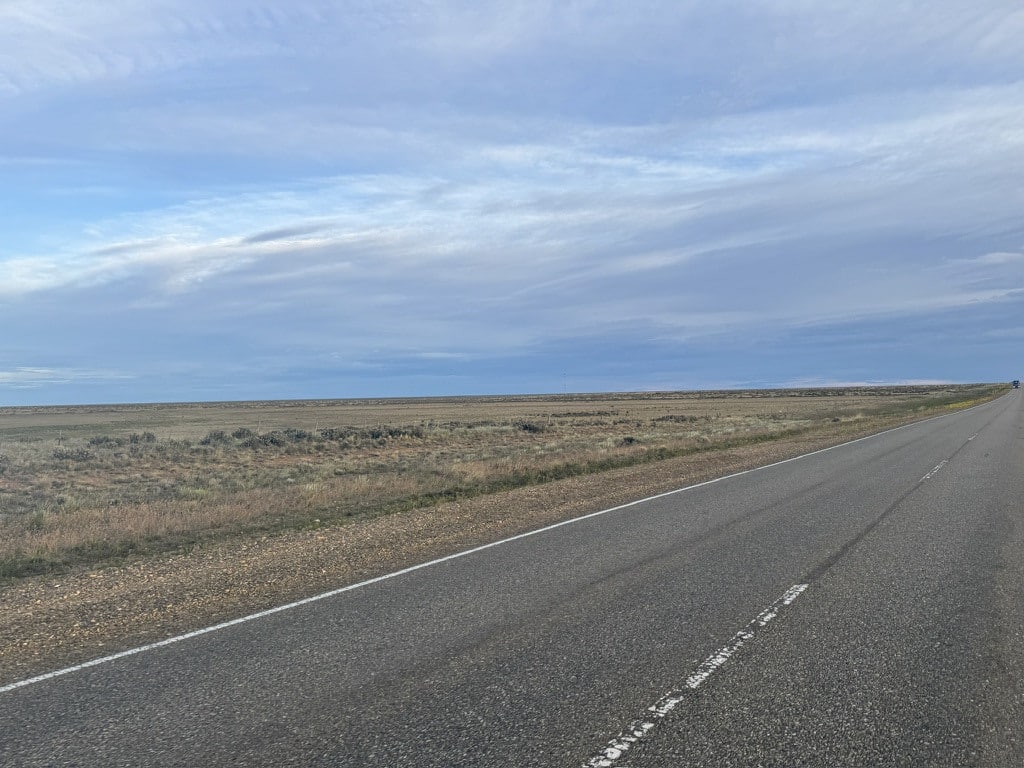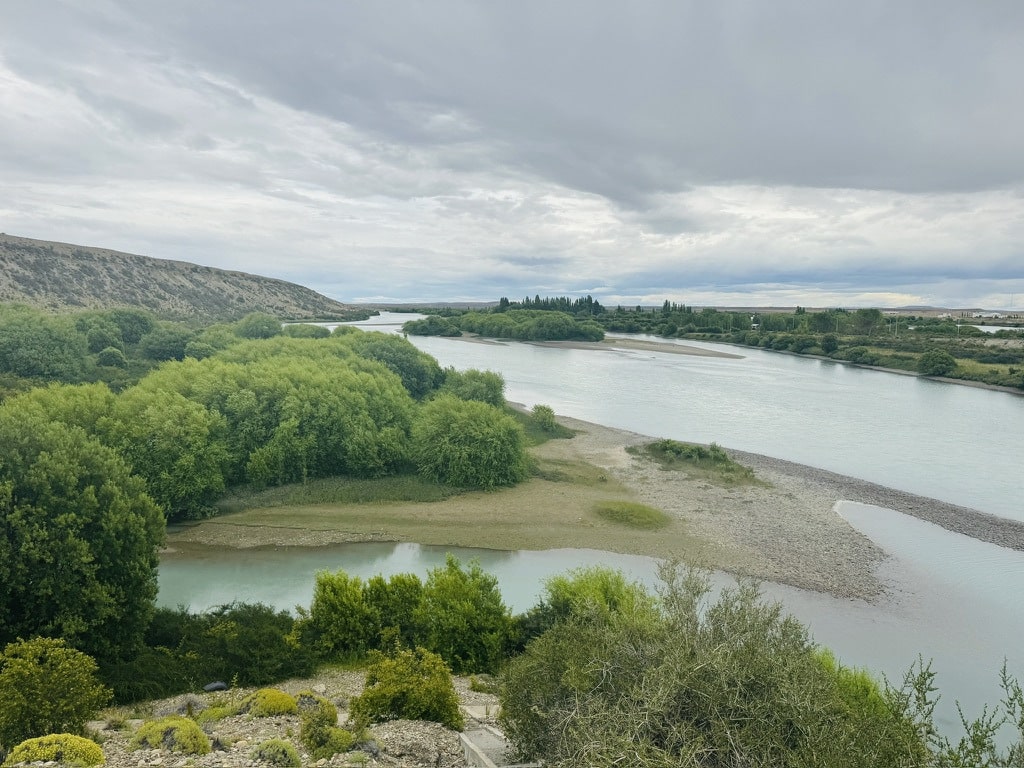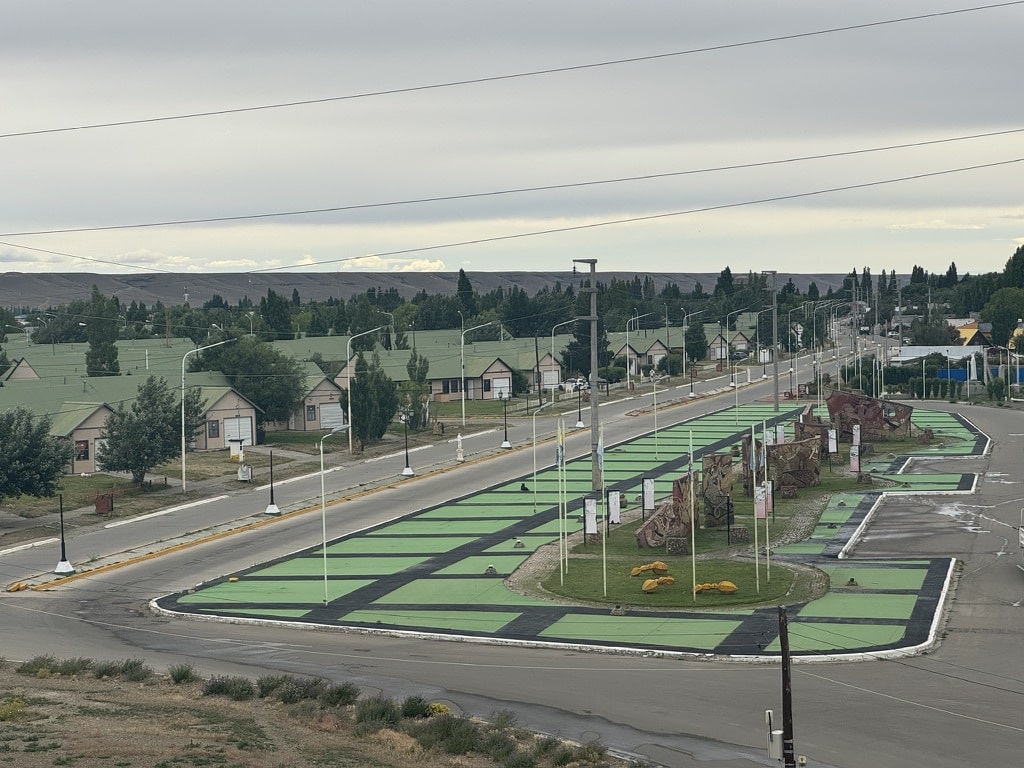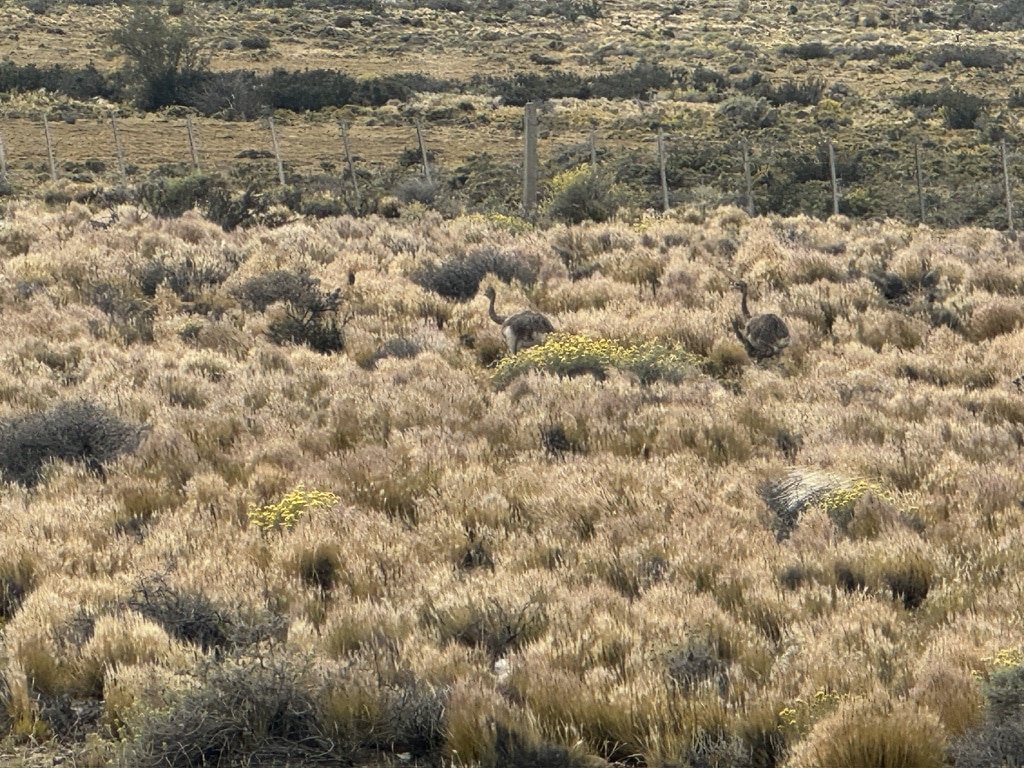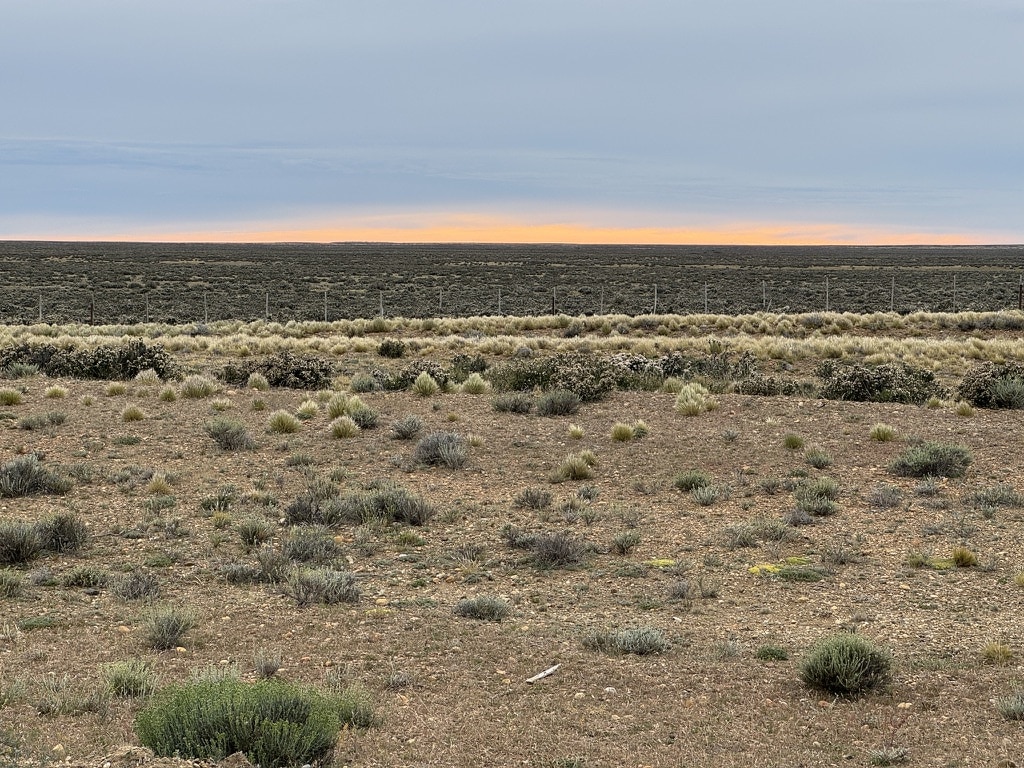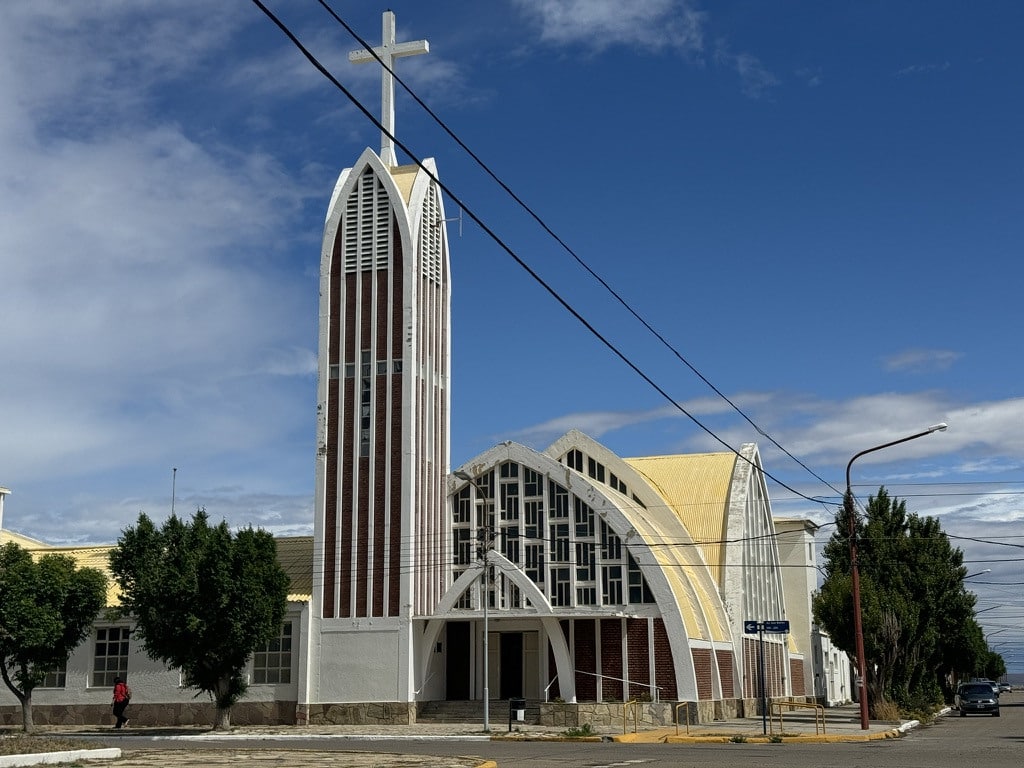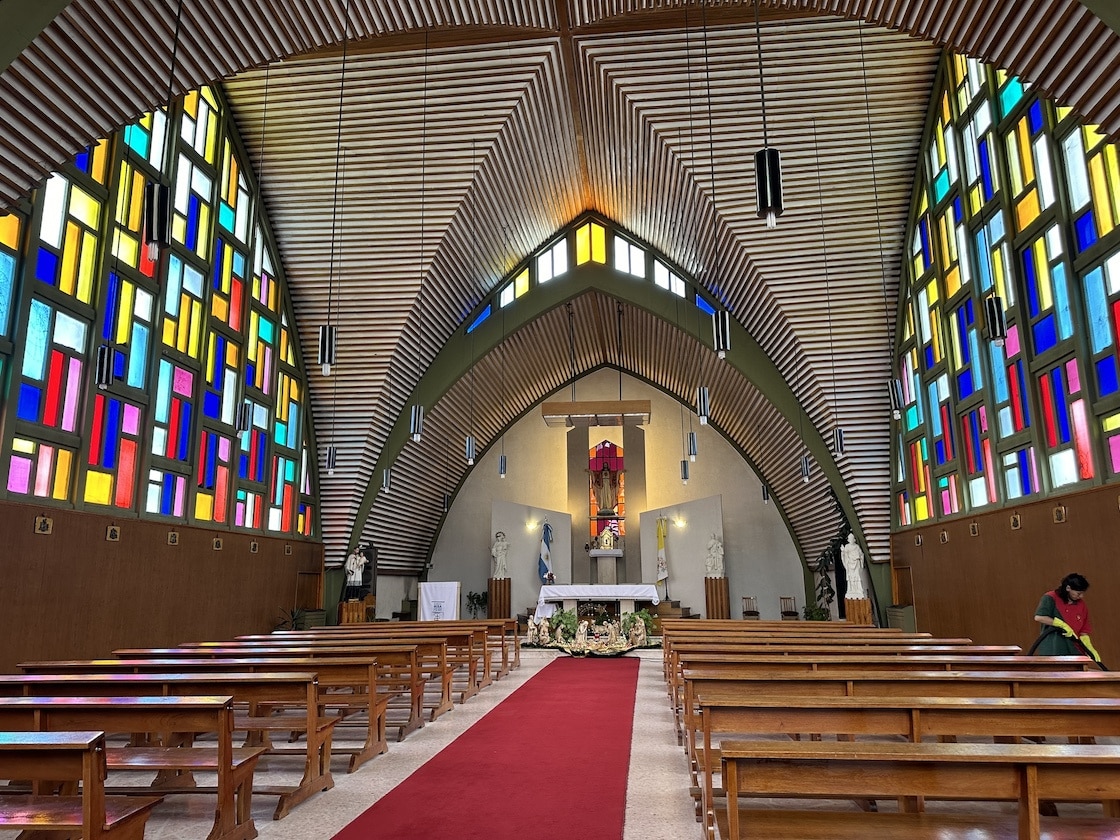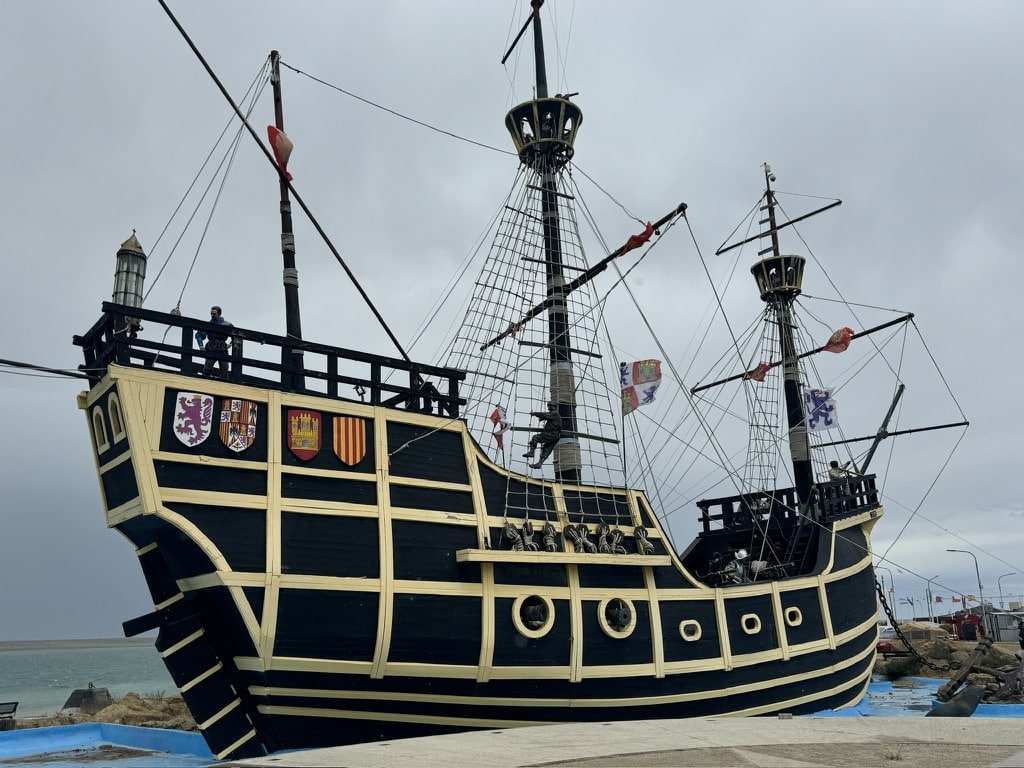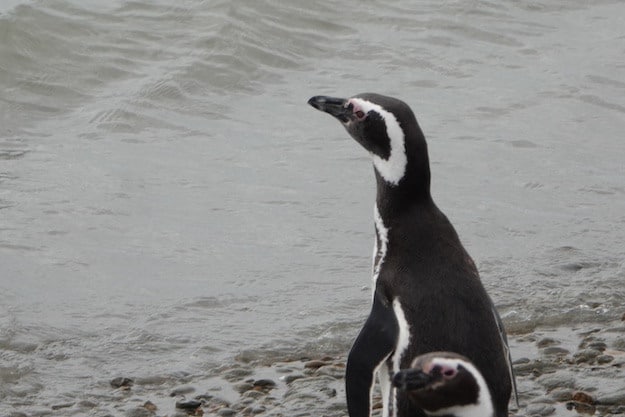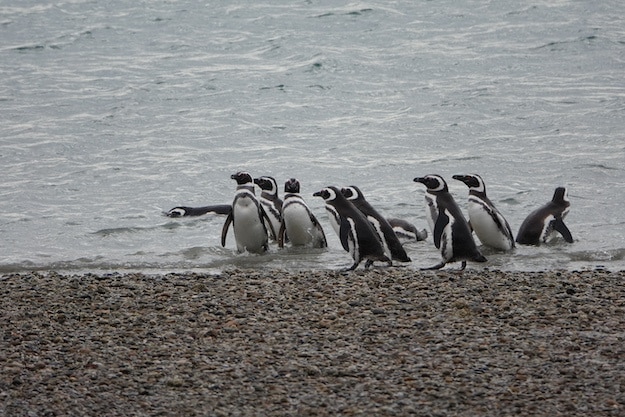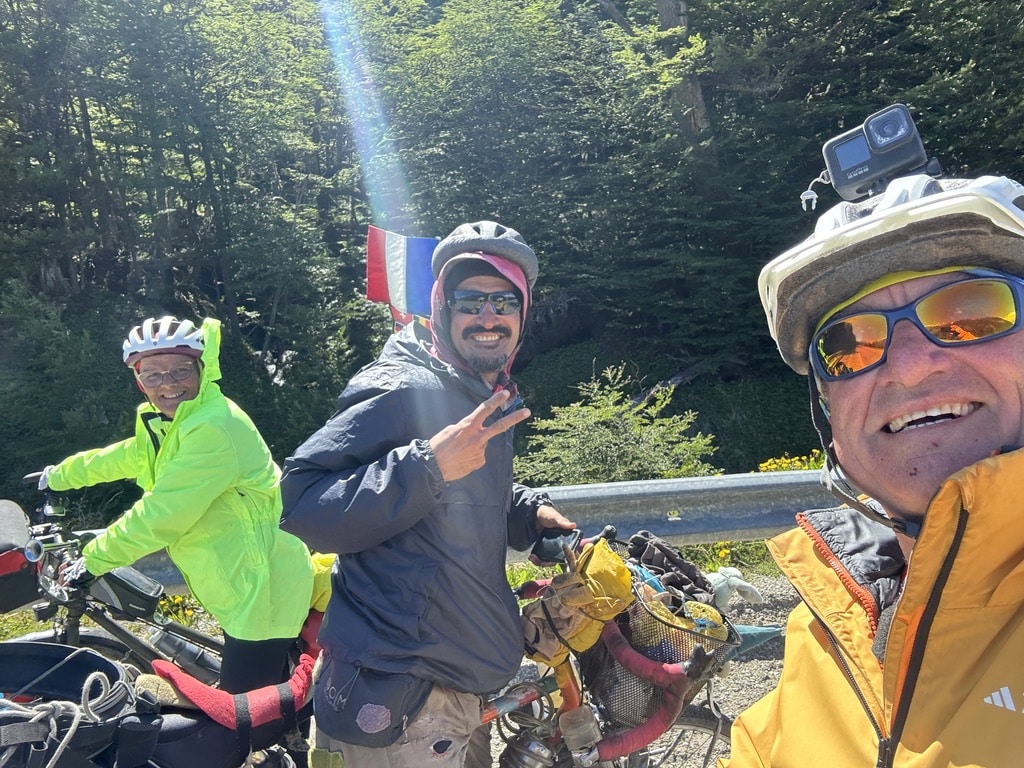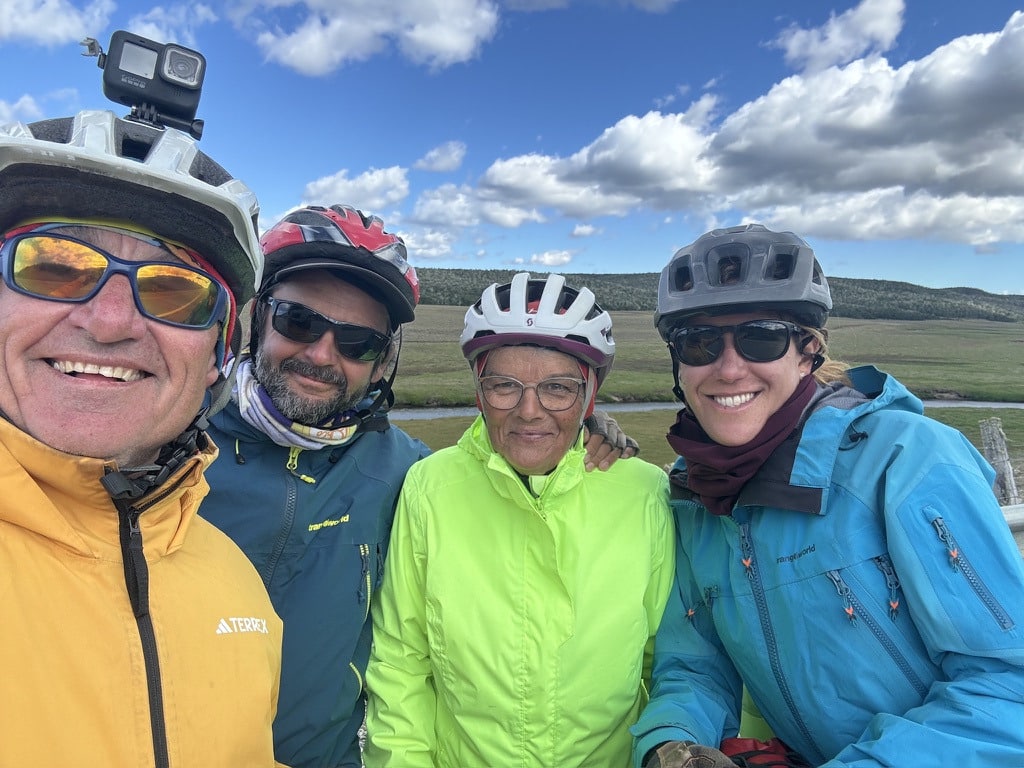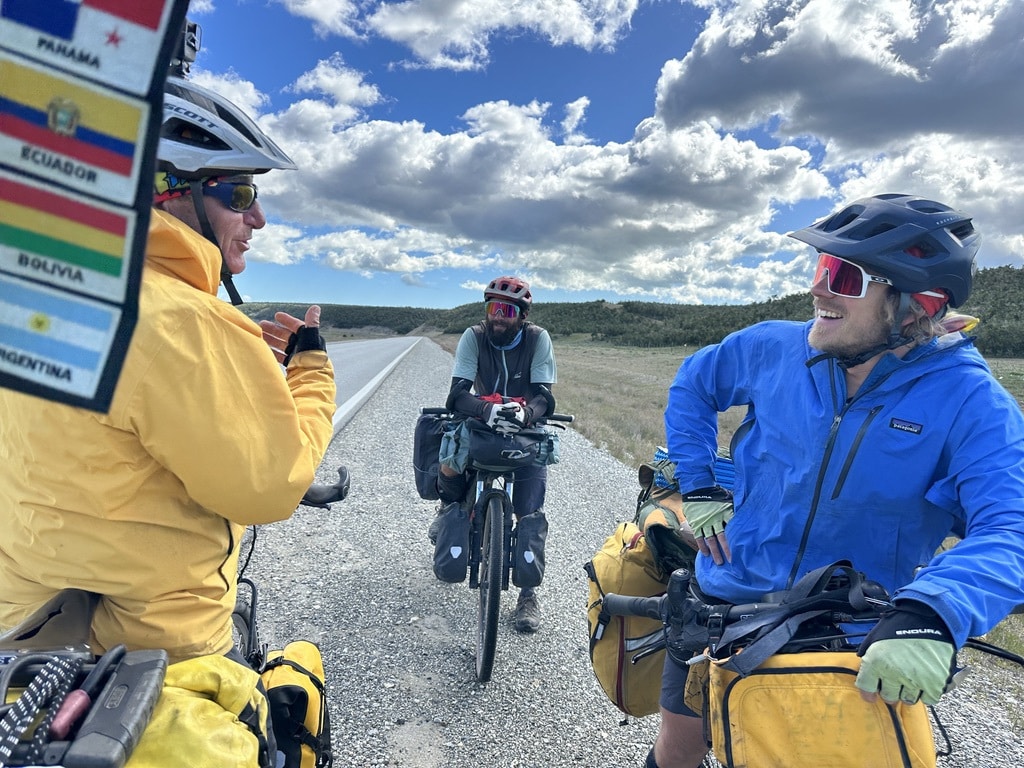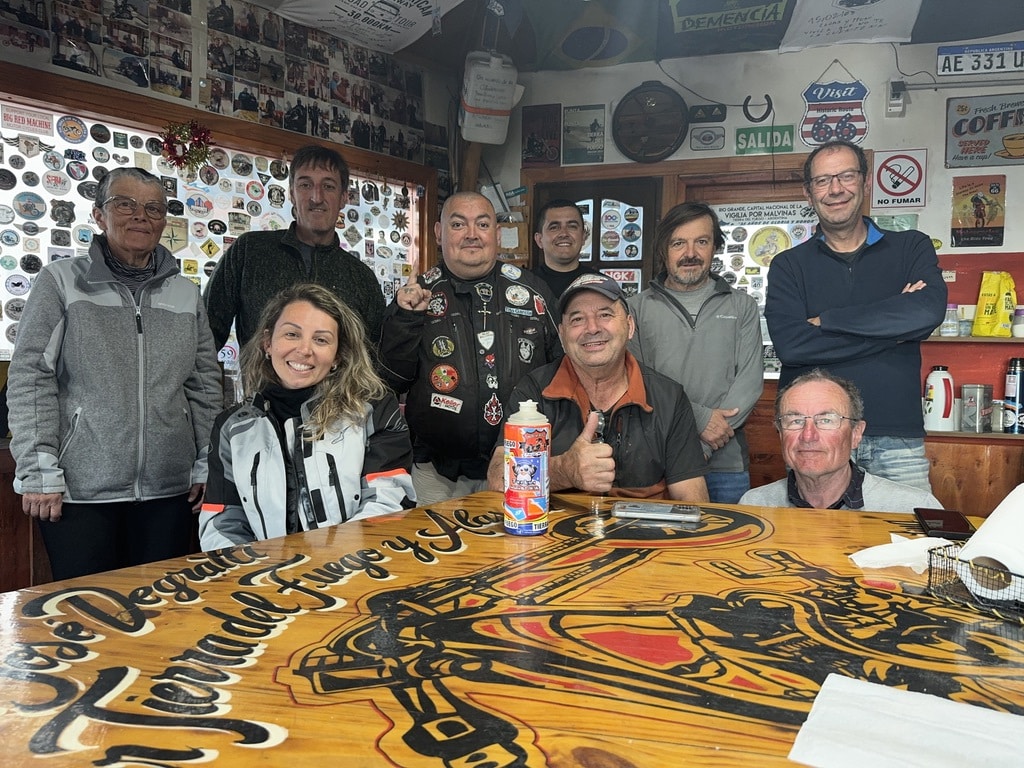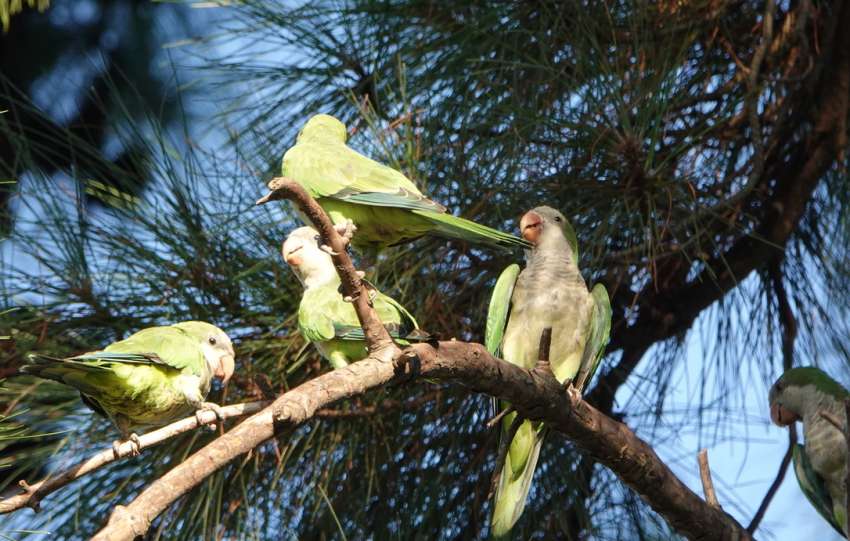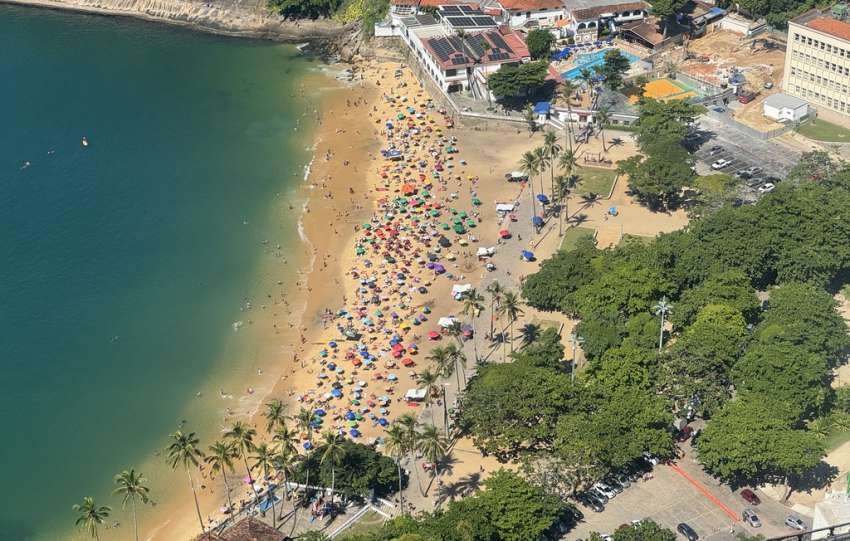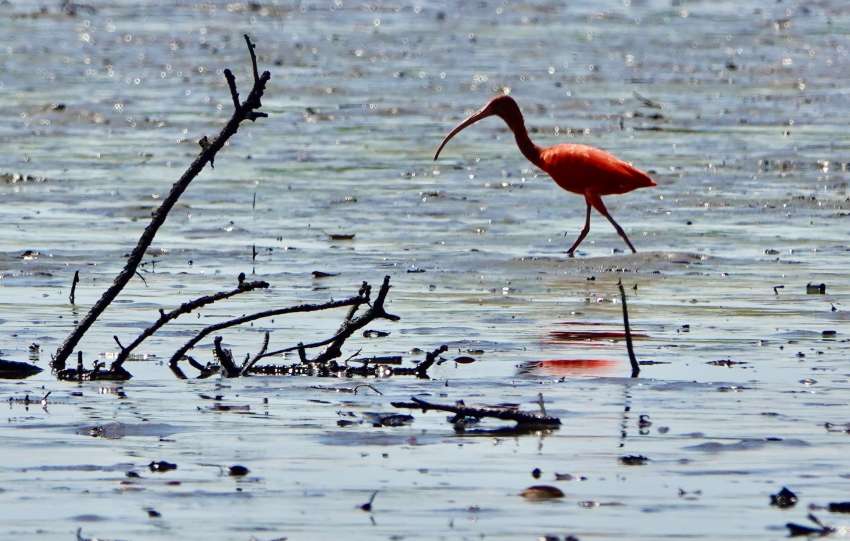The east coast of Argentina
Share This Article
From Tuesday December 26 to Sunday January 7, from Ushuaïa to Puerto San Julián (east coast of Argentina)
Very good customs officials.
After 10 days, this Tuesday we leave Ushuaïa. The wind should be favorable and allow us to appreciate the route we have already completed on the way out. This morning Lake Escondida offers beautiful colors and the guanacos are still running in the spaces.
A rather quiet day, during which we will come across a few cyclists heading towards Ushuaïa. This evening we sleep again in Tolhuin, at the casa de ciclistas of the “Union” bakery.
The next two days will take us quietly and without any particular event to Rio Grande and then to the Argentine border. We sleep again in the kitchen of the border post. On Wednesday morning, customs officials gave us permission to leave before the border post opened. We drove for an hour without any vehicles and in an area between two countries. First part of the day with a lot of headwind, before experiencing the holy grail of having it at your back. Suddenly the speed is stratospheric and very quickly we reach Cerro Sombrero. An oil town where everyone works for the oil and gas company. It’s a pretty sad place on the east coast of Argentina.
Long distances
We will now drive along the east coast of Argentina for more than 2500 km. Cities and towns are often more than 100 km apart and with the wind it is not always easy to find a place to pitch your tent. On Saturday the 30th we left Cerro Sombrero. We crossed the border between Chile and Argentina again, this division between these two countries is impressive. We crossed the Strait of Magellan again by ferry.
Today the wind is favorable and we easily travel the 140 km that take us to Río Gallegos. A city of 100,000 inhabitants next to the sea in the province of Santa Cruz. It is an old commercial port. Río Gallegos is primarily a military garrison town. Tributes to the combatants of the Falklands War are everywhere. Deep down, the Argentines seem bitter for not having recovered the Malvinas Islands. We spent New Year’s in the city, but how strange. There is no one on the streets on New Year’s Eve, everyone is locked in their homes. Here “In the Land of Fire” there are no fireworks, it is prohibited. In the end we will have a very normal and ordinary New Year’s Eve evening.
A comforting campsite
We leave Río Gallegos on Tuesday January 2, still in these wide open spaces where guanacos are more and more numerous. There are herds everywhere on the road, it’s impressive. The wind is quickly rising against us. We decide to stop, this time at a campsite where we find a warm welcome and above all barbecued sheep meat, thanks to the owner for this good meal.
Magellanic penguins on the beach
This January 3rd we will leave the campsite at dawn to avoid the wind. The next town Luis Piedrabuena is more than 200 km away and for that this afternoon you will have to find a place in nature to camp. Finally we will sleep behind an abandoned building that served as a hotel a few years ago. A very quiet night marked by the different sounds of animals wandering around. After a stop in Luis Piedrabuena we arrived at Puerto San Julián on January 5.
A city that experienced an important point in history. This is where Magellan stopped to find food on his journey to India. A good surprise we meet Magellanic penguins on the beach of San Julián. They bear this name in homage to the navigator. The town’s two main activities are livestock farming and the “Cerro Vanguardia” gold mine which employs nearly 2,000 people.
As the weather forecast is bad, and the wind will blow strong and from the north, we stay here for several days.
Our road
During these twelve days we covered 955km. Find the map of our route on our site or by clicking on this link .
Our meetings:
Few encounters on this road to the north, the latter is rarely used by cyclists.
- A very nice cyclist but about whom we know nothing.
- Marion, Anthony, Franck and Tony on the way to Ushuaïa
- A group of Argentine cyclists in a hostel in Río Grande.
Did you know : Depending on which scientists speak, there are 17 or 18 species of penguins in the world.

